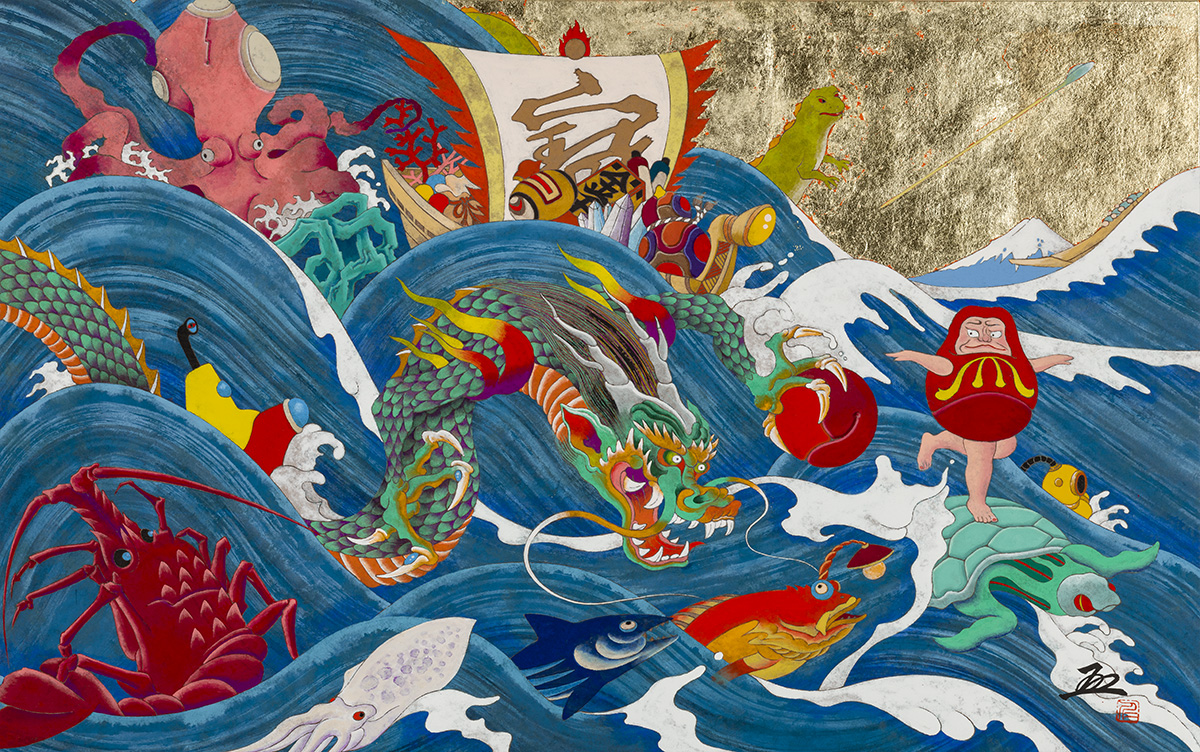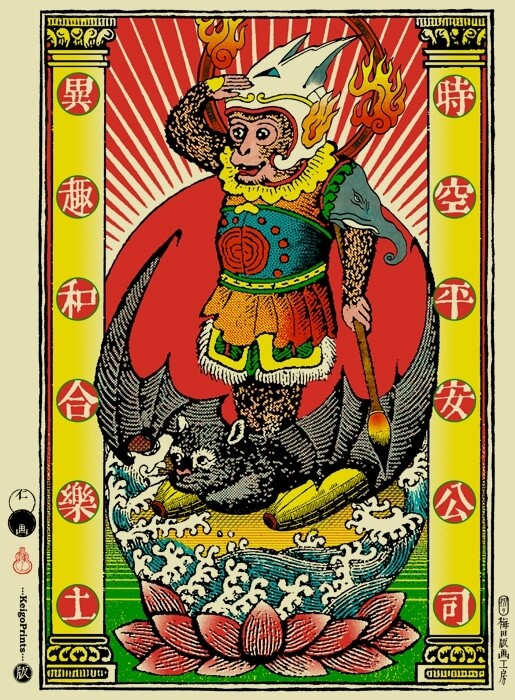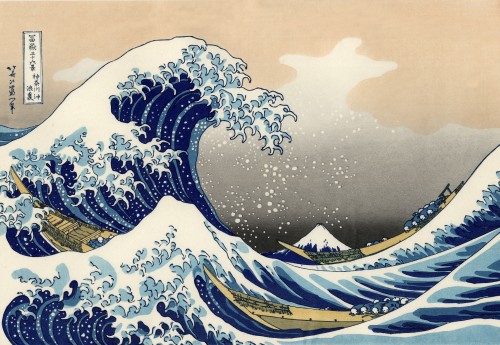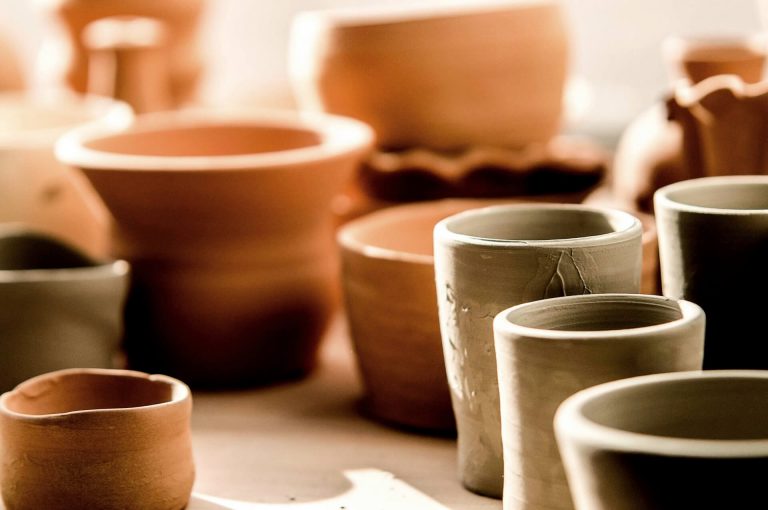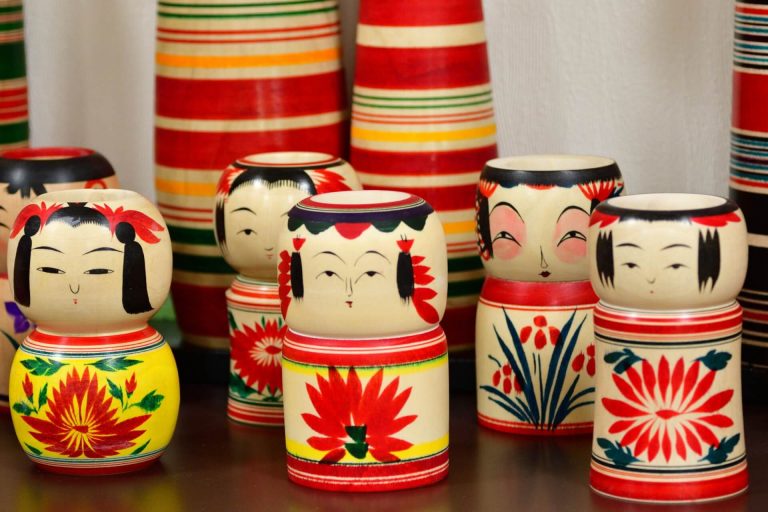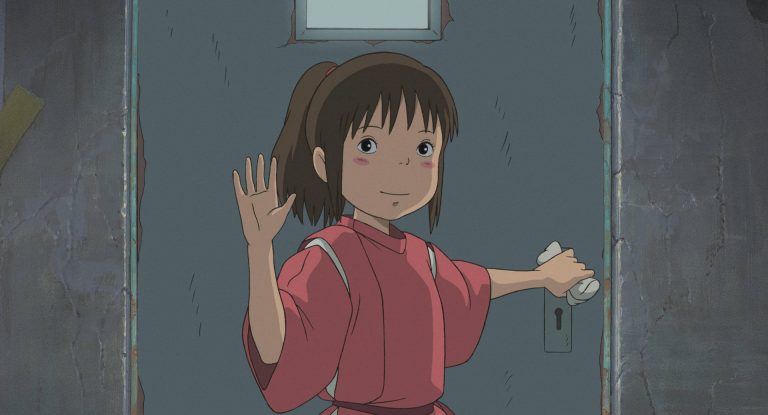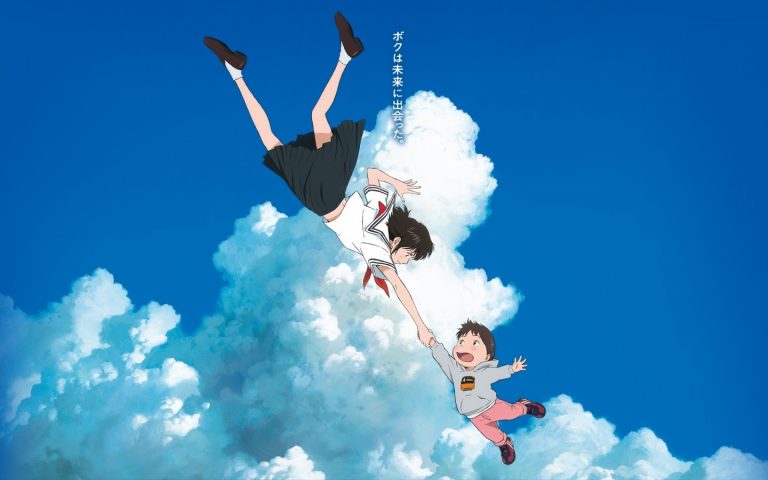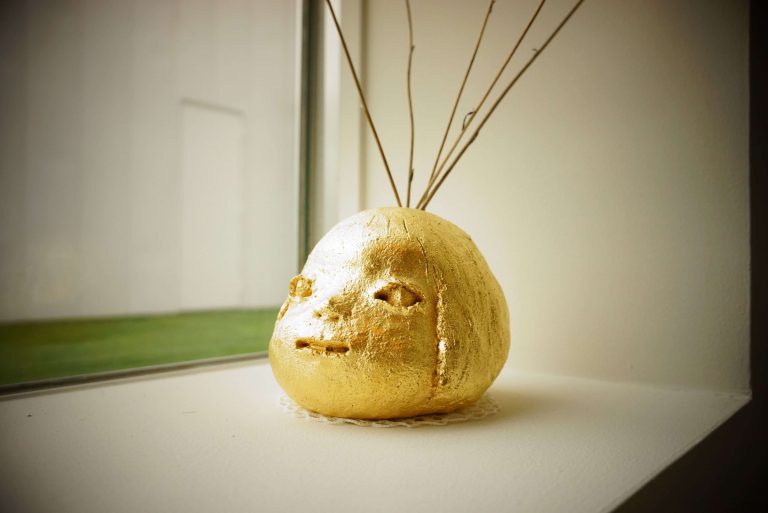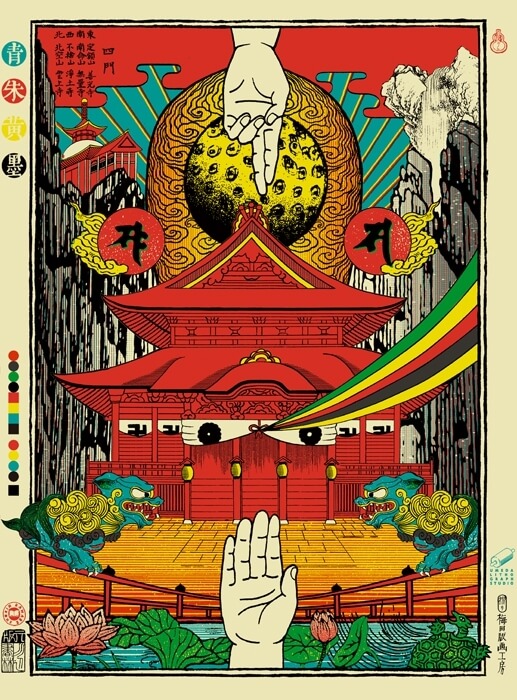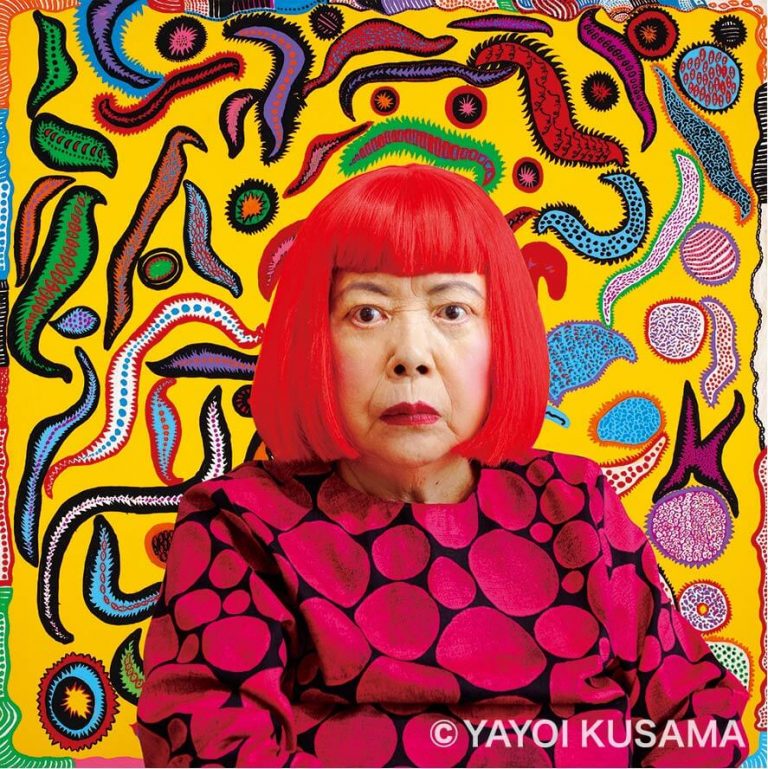30 Japanese Arts & Crafts You Need To Know
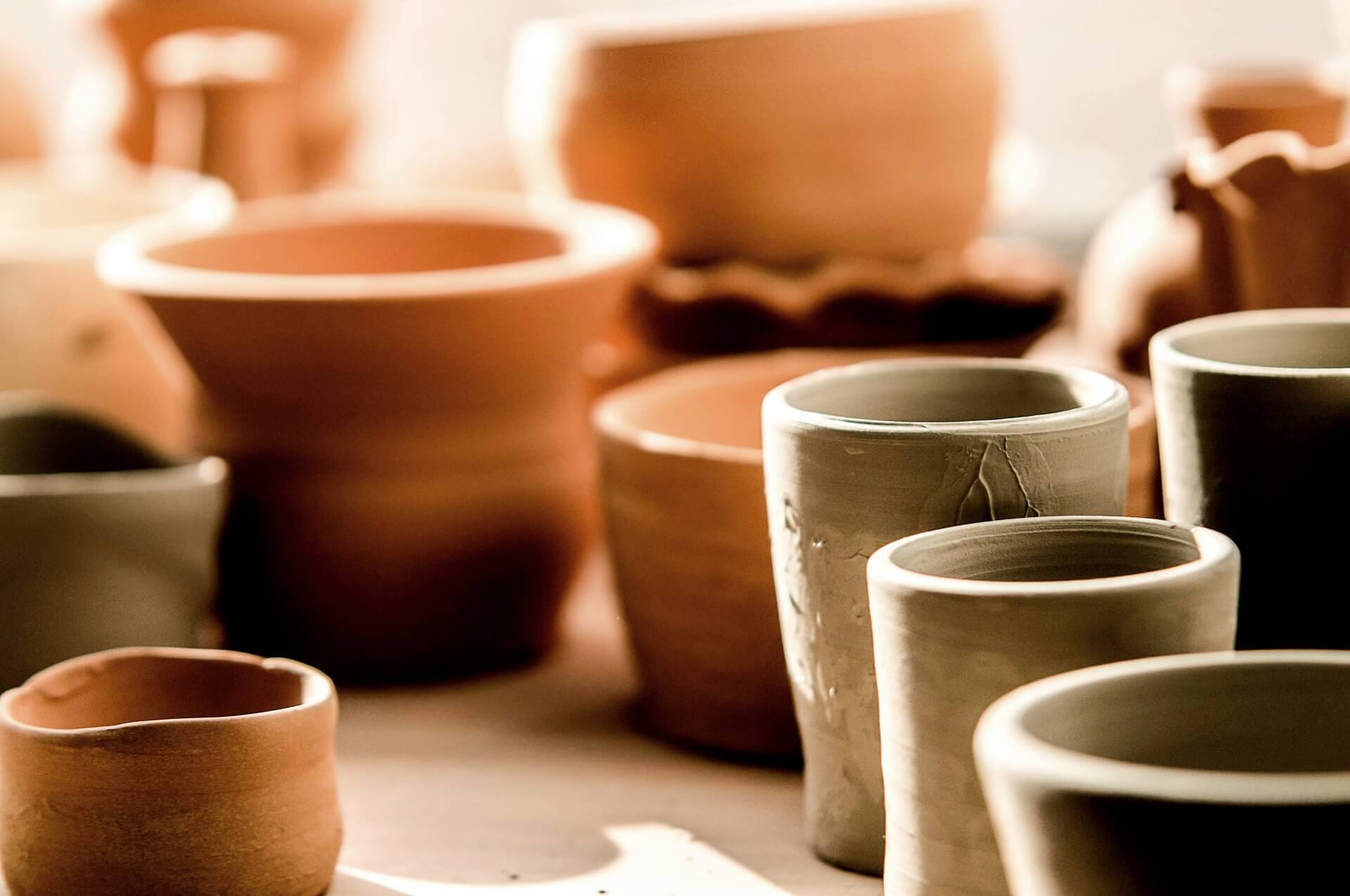
One of the great pleasures to any visit to Japan is enjoying the rich and beautiful world of its arts. Outside of the Japan, the country is best known for its most refined arts and cultural achievements however just as captivating, the country has a rich and varied tradition of crafts and folk arts which capture the spirit and essence of the Japanese experience.

On this page, we list arts and crafts you are likely to encounter while here, and provide a quick summary of what it’s all about. The list is varied and ranges from the traditional and classical arts to the more contemporary and every day including artistic techniques, practices and specific objects you will encounter on your travels – with a focus on items that make great gifts and souvenirs that are easy to carry for international visitors.
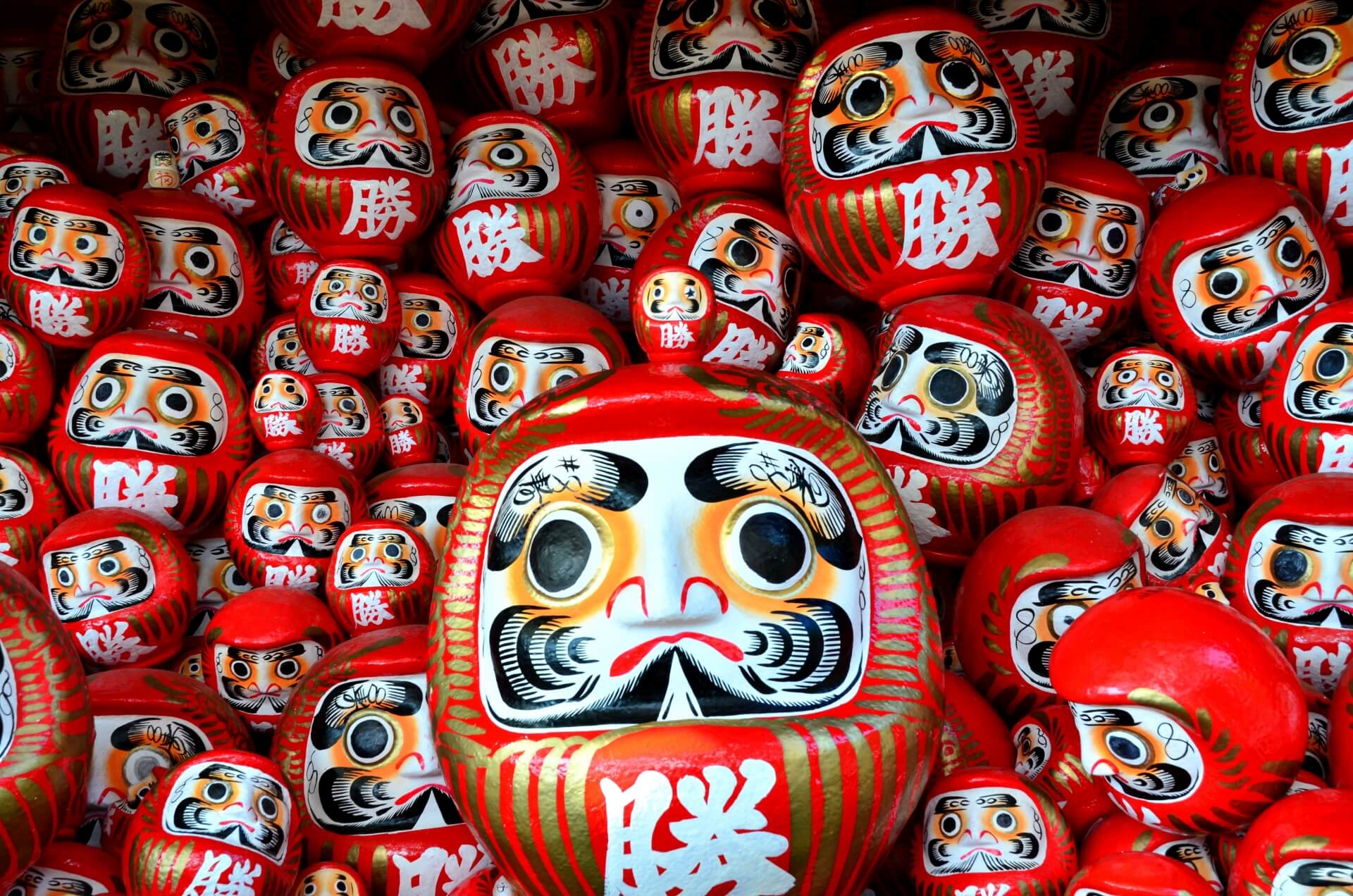

By no means exhaustive, we hope the following helps get you started with your exploration of arts and crafts in Japan:
ABURAE / 油絵
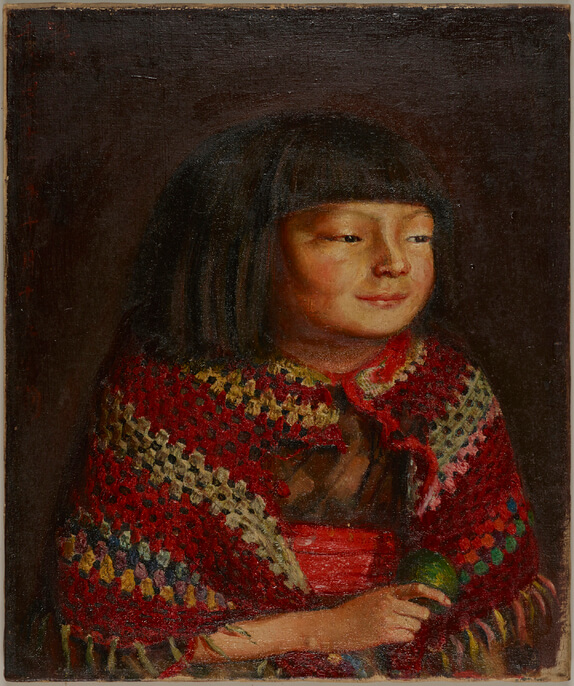
One of many forms of Japanese painting, ‘aburae’ refers to oil painting, in contrast to other styles. Traditional Japanese painting techniques have their origins in China, however aburae reflects the increasing influence of the West from the 16th century onwards, through the Edo Period and Japan’s opening to the world from the later-19th century onward. Much like in the West, oil painting is a broad artform encompassing all manners of schools, techniques and subjects.
ANIME / アニメ
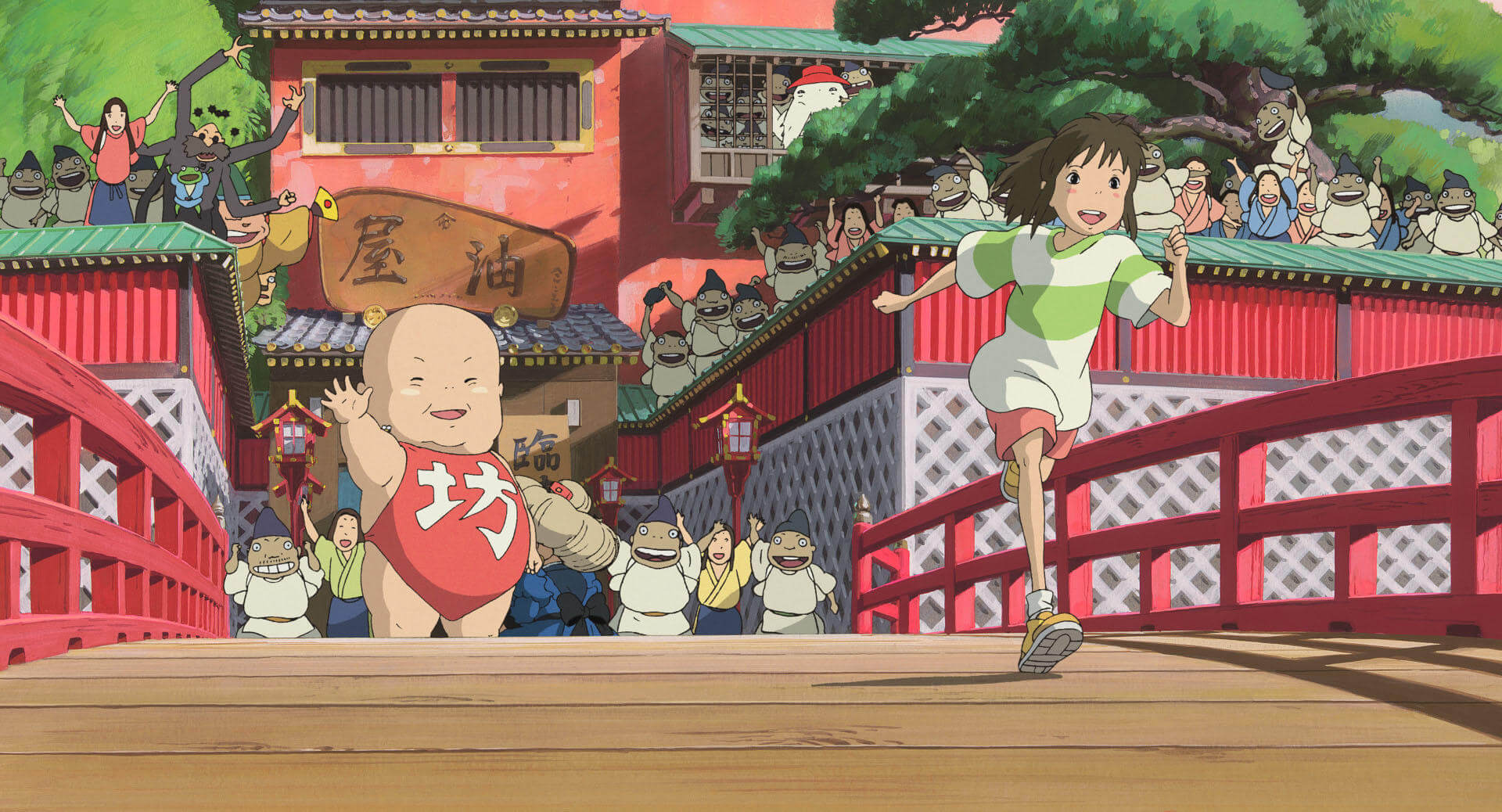
Derived from the English word ‘animation’, ‘anime’ encompasses both hand-drawn and computer-generated animation. Dating from the early-20th century, Japan produces a huge amount of anime each year, with countless studios catering to all tastes and storylines. Whereas animation is often considered purely for children in Western cultures, anime in Japan is loved by people of all ages, with film studios including Studio Ghibli and its founder, Miyazaki Hayao, considered national treasures and core part of the country’s social fabric.
Real Life Ghibli Locations in Japan
Japan is full of locations that seem to be straight out of a St…
BONSAI / 盆栽
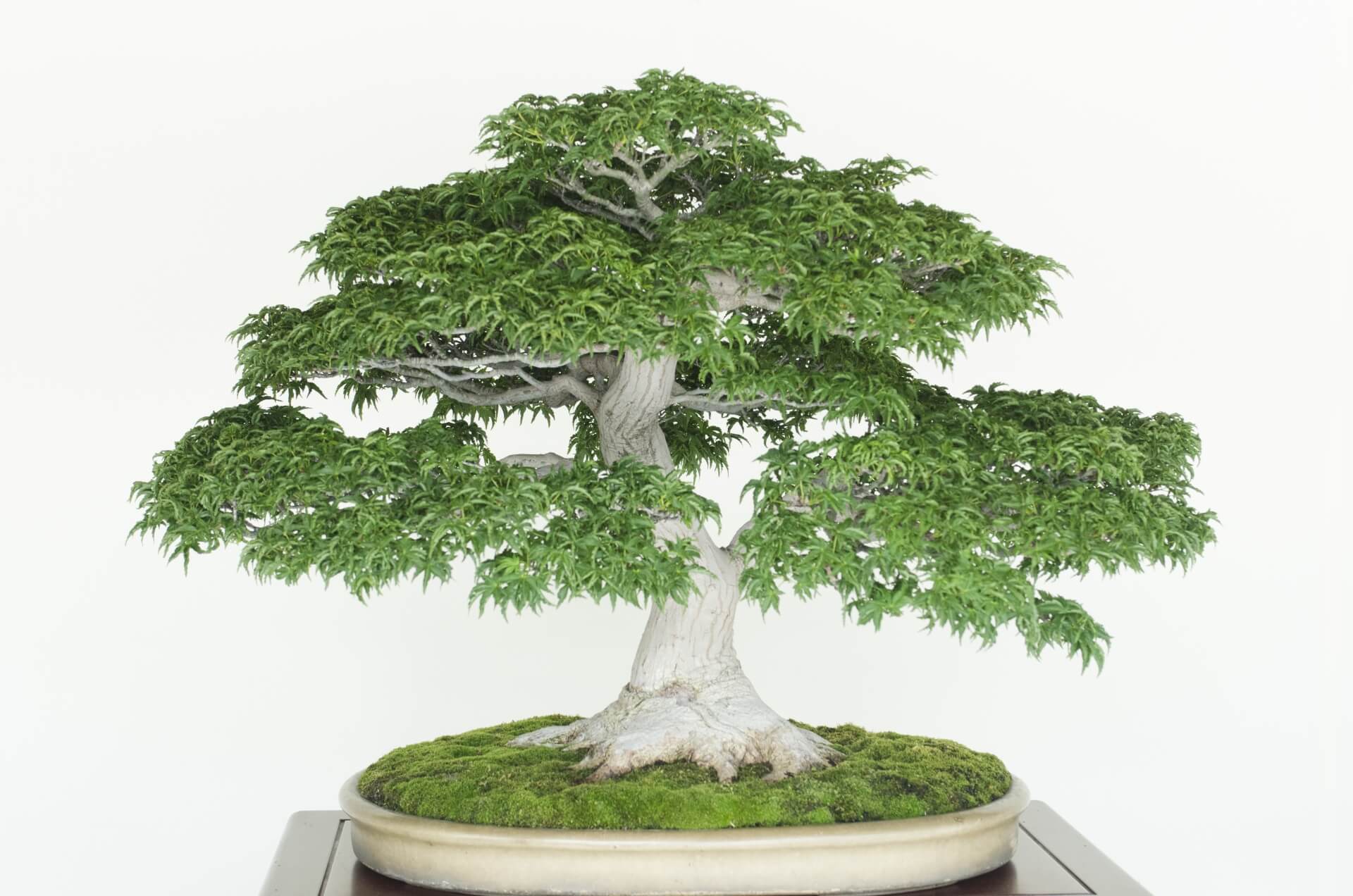
Instantly familiar to most international visitors, ‘bonsai’ involves the studied cultivation of plants into miniature forms, trained and sculpted to mimic a fully-grown tree. Requiring years of application to master, bonsai can be practiced by anyone with space for a miniature tree of a shelf and as such, is a hugely popular past-time both inside and outside Japan.
BUTSUZO / 仏像
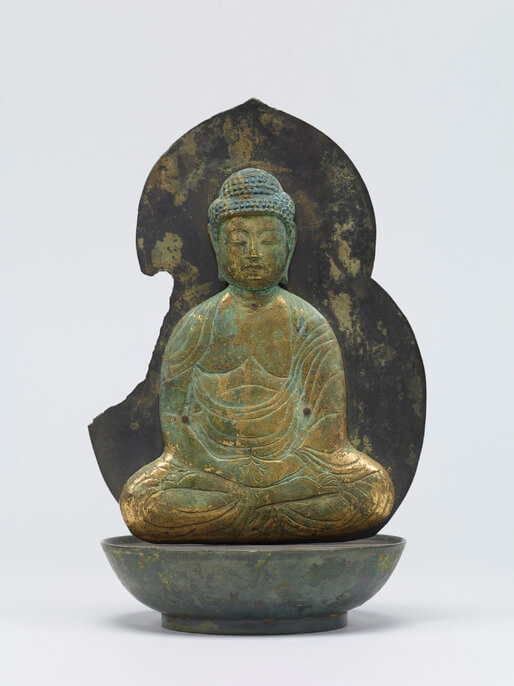
While Shintoism is the official religion of Japan, Buddhism plays an equally important role with the majority of Japanese identifying with both religions. Imported from Korea and China from around the 5th century, Japanese Buddhism is now a distinct branch of the religion with many denominations existing within that general umbrella. Visitors to temples will be struck by the deep beauty and tradition of artistic expression, of which, Buddhist sculpture or ‘butsuzo’ is perhaps the most striking. Highly complex and quite confusing at first, appreciating the beauty and importance of the sculptures doesn’t require expert knowledge but instead, just simple curiousity about what you are looking at and what it means. Many visitors will also be drawn to and captivated by statues of the buddhas. Often inside temples but also outdoors, buddha statues depict not just the historical Buddha – the man whose teachings Buddhism is based on – but also the many buddhas with the religion. Yet again highly complex and captivating, sculptures range hugely in size, style and if you’re interested in buying one, price.
CHADO / 茶道
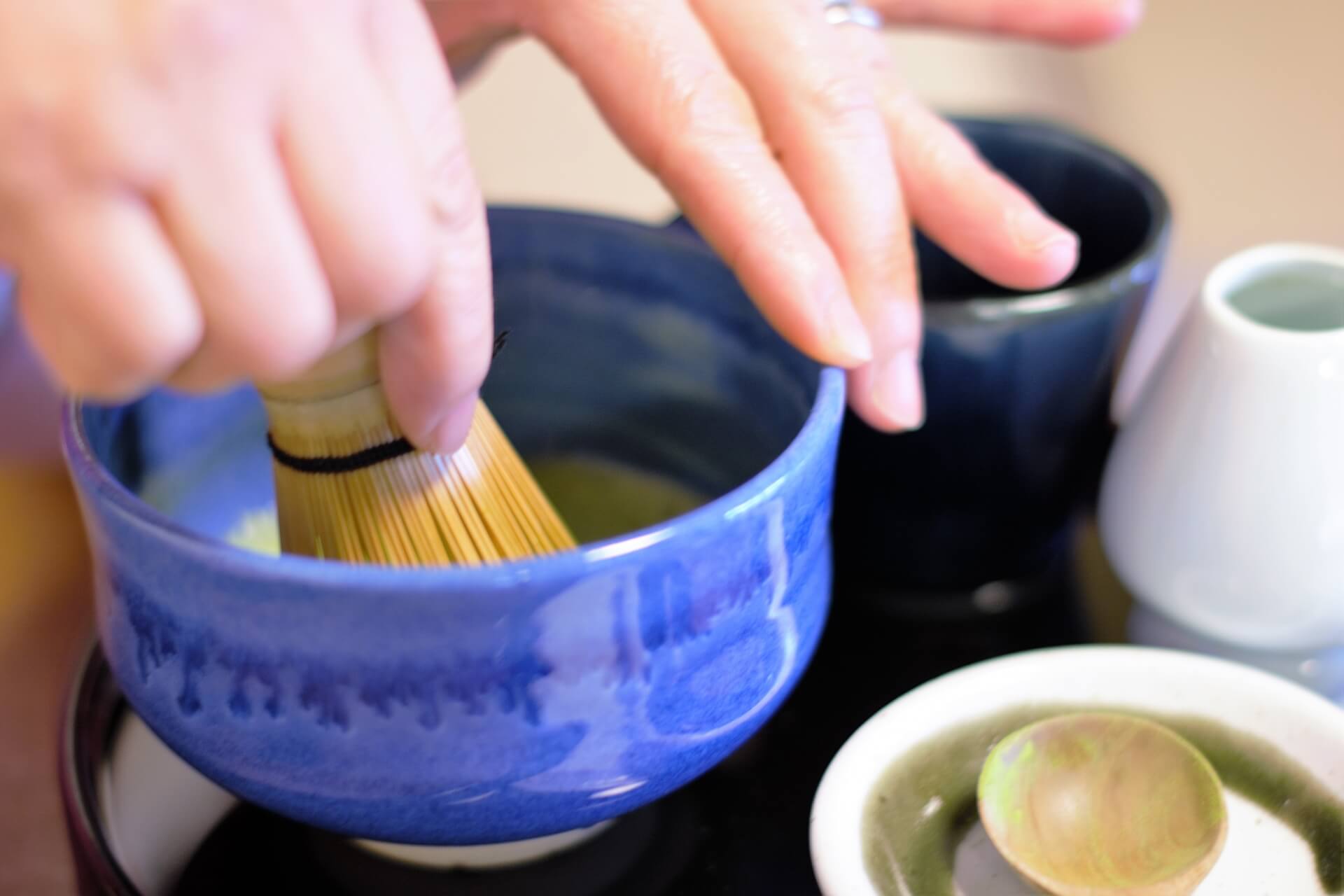
Translating as ‘way of tea’, ‘chado’ or ‘tea ceremony’ is perhaps the quintessential Japanese practice and experience – a ceremonial and meditative performance, in which green tea is prepared for a guest. Practiced as a hobby by some Japanese, international visitors can experience chado at many locations throughout the country, with authenticity, expertise and cost varying greatly.
1 Day Tour
| 1-Day Tour from Nagoya: Samurai Swords and Japan’s Oldest Castle | |
|
| |
| Period | All Year Round |
| Time | 9:00-16:30 |
| Meeting Place | JR Nagoya Station |
| Adult Rate | ¥21,900 ~ |
| Child Rate | ¥14,000 ~ |

DARUMA / 達磨
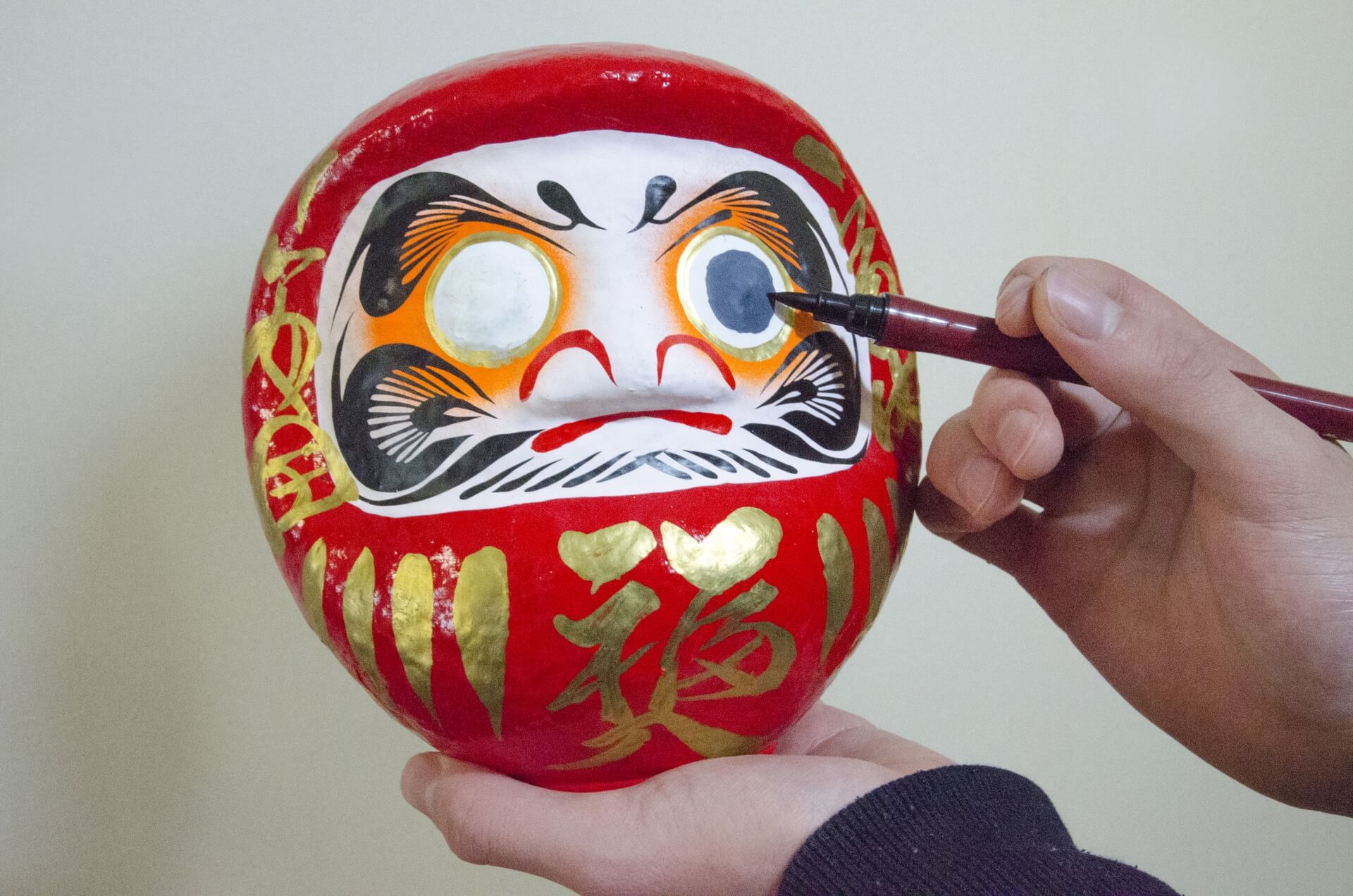
Any visitor to Japan will surely have noticed the ubiquitous ‘daruma’ dolls decorating restaurants, businesses and homes throughout the country. Often made from papier mache and then hand-painted, the dolls are named after an Indian monk who transmitted Zen Buddhist practices to China. The legends about daruma are many and his dolls are bought to then make a wish or set a goal by colouring in one eye. The doll then remains as such until the wish or goal if fulfilled, at which time the other eye is coloured-in. Coming in all sizes and colours – with colours also carrying specific meaning – daruma make a meaningful gift or souvenir while in Japan.
HANGA / 版画
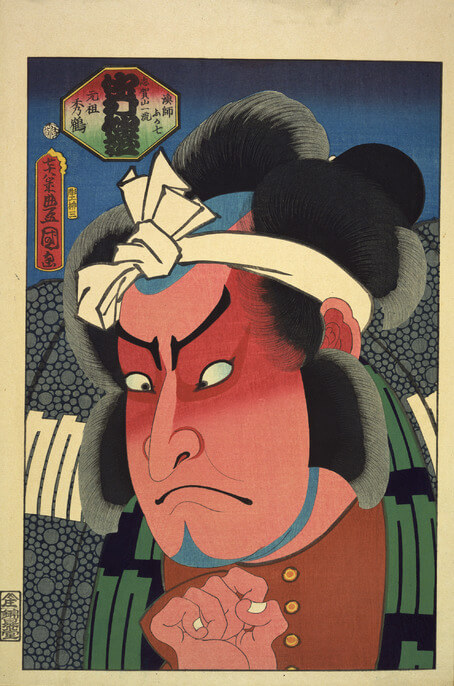
The general term of ‘hanga’ refers to the traditional art of woodblock prints as used to produce ‘ukioy-e’ images – see below for details. Visitors might also hear the word ‘shin-hanga’. Shin-hanga refers to traditional methods applied to create a ‘new-hanga’, from the early 20th century onward. The movement involved some changes to traditional techniques with Western methods and motifs distinguishing the art from earlier iterations.
IKEBANA / 生け花
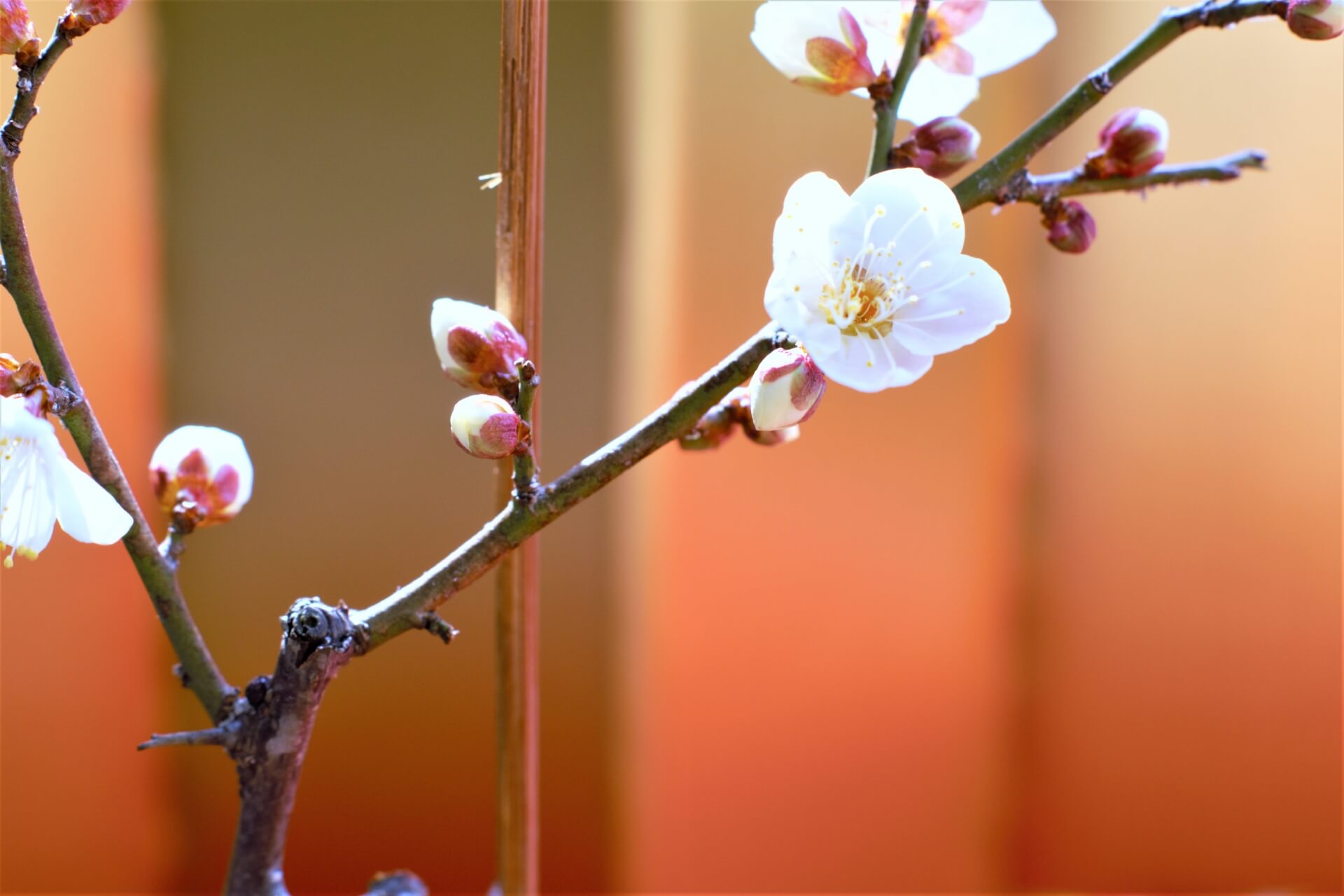
Meaning ‘to arrange flowers’, ‘ikebana’ is a popular hobby for many Japanese with some practitioners developing their skill to an artform. Also referred to as ‘kado’ or ‘way of flowers’, this ancient artform was originally used in arrangement of floral offerings on altars, introduced to Japan from China with Buddhism. Today, ikebana is practiced by many people as a hobby with others mastering the art with numerous schools of ikebana teaching different techniques considering the colour, form, a position of the flowers.
KIMONO / 着物
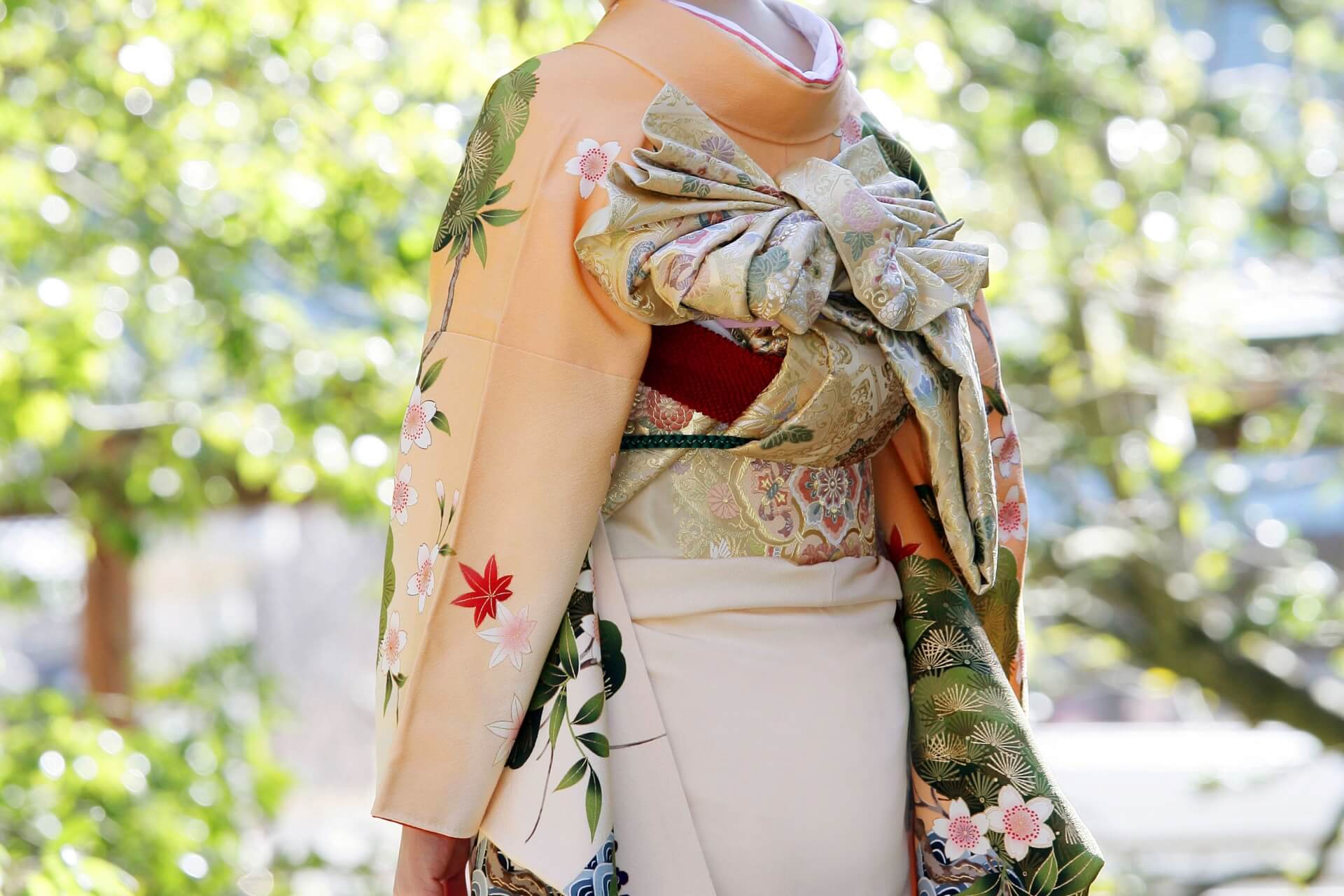
While ‘kimono’ are a type of traditional clothing and as such, not an artform in their own right, like many other practical items in Japan, the skill involved in producing them has so great and that many are not considered pieces of artistic work in their own right. Throughout Japan, you will encounter kimono museums displaying some truly exquisite pieces, never to be worn again or first created as art pieces demonstrating the stunning skill of this most Japanese of arts.
MANDALA / 曼荼羅
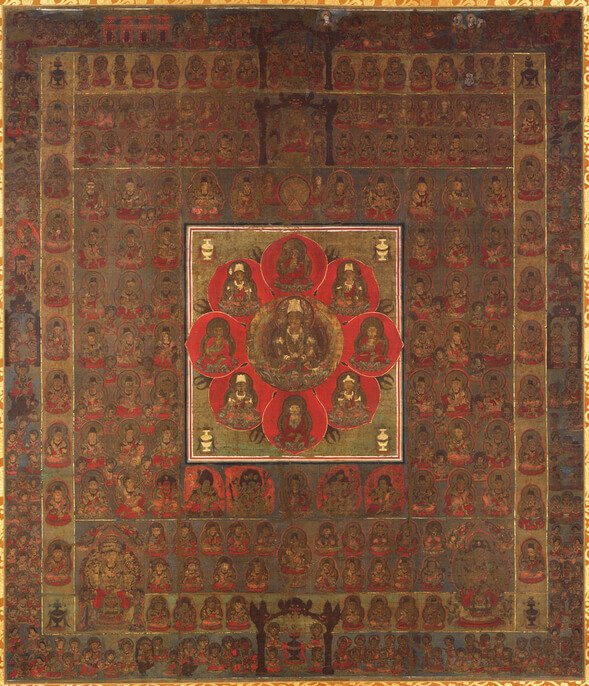
Hindu in origin, ‘mandala’ play an important role in Buddhism including Japanese Buddhism. Made popular in Japan from the 9th century onward, mandala are geometric configuration of symbols depicting Buddhist entities and conceptualisations of the universe radiating-out from the centre. Varying greatly in form and appearance, the production of mandala is considered a means of entering a meditative state and a point of contemplation. Playing an important role in both Hinduism and Buddhism, mandala have been appropriated by ‘new age’ movements and contemporary artists in new interpretations of very old techniques and themes.
MANEKI-NEKO / 招き猫
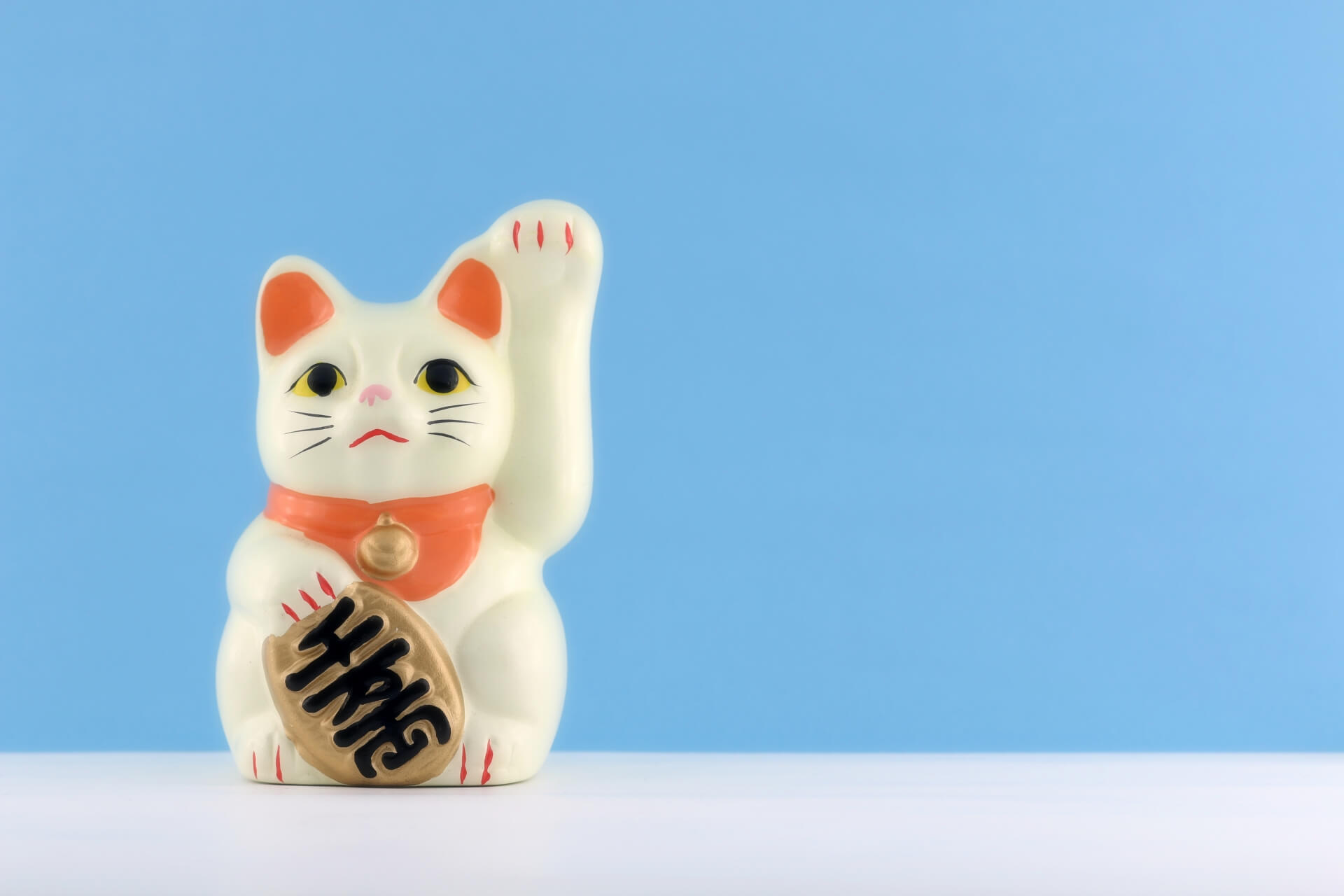
A common sight throughout Japan, ‘maneki-neko’ or ‘beckoning cats’ are believed to bring good luck to their owners. Coming in all sizes and colours, the cat has one paw lifted beckoning fortune and good luck toward it. Often made of ceramic or plastic, some are animated with their lifted paw moving back and forth. Lots of stories tell of the origins of the popular cats, which make a cute and meaningful gift or souvenir of your time in Japan.
MANGA / 漫画
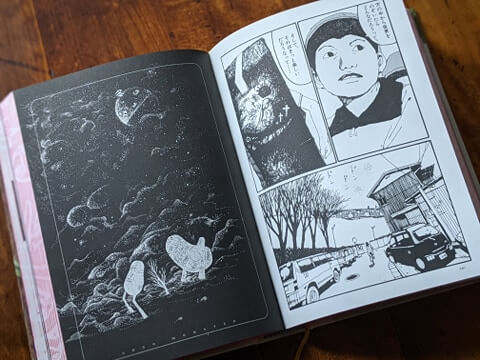
Even if you’re not a fan, chances are you have some idea that Japan loves comics. Known as ‘manga’, Japanese comics have their roots in much older art forms and are heavily read by many people through their lives. As such, stories span the spectrum of human experience, from the joyful and childish, to dark and twisted and everything in between. Having first emerged in the 18th century, manga exploded in popularity through the second half of the 20th century and is now a dominant art form in Japan.
MIZUHIKI / 水引
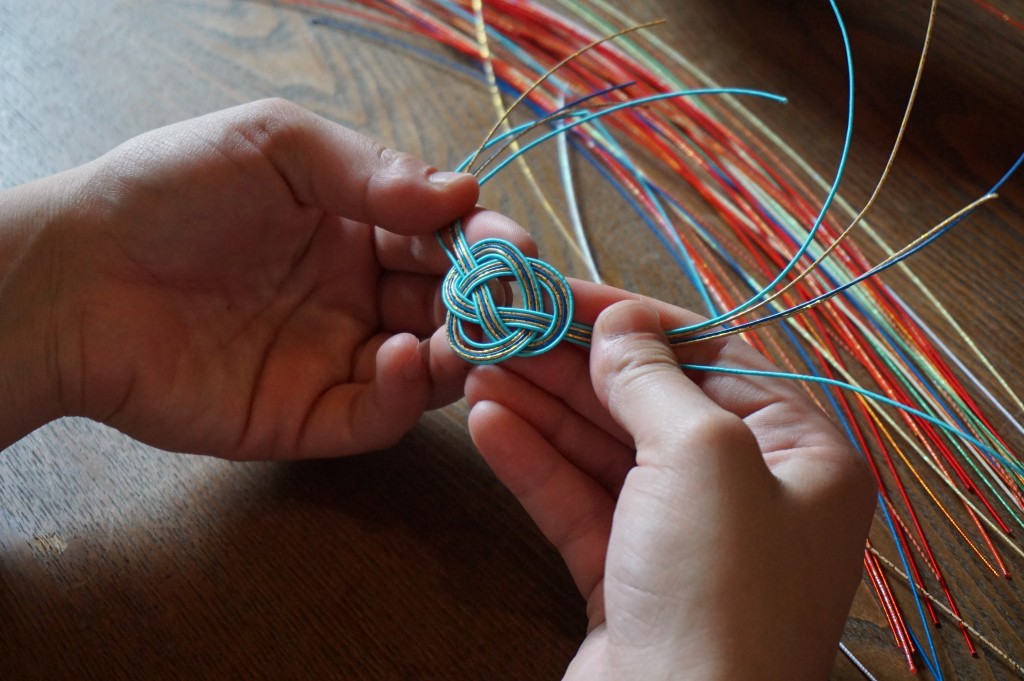
Gift-giving plays an essential role in Japanese culture as a sign of appreciation and respect. The presentation of gifts can be considered tantamount in importance to the gift itself, a cultural propensity which leads to Japan’s reputation for beautiful design and packaging for even the most simple of items. The ancient art of ‘mizuhiki’ involves the tying of beautiful, colored cords around gifts as a form of decoration. This tradition played an important role during the Edo Period, when gifts presented by and for samurai became increasingly more elaborate in design – with the color and number of cords all holding meaning. Today, mizuhiki continues to be practiced in decorating gifts and artform in its own right.
NIHONGA / 日本画
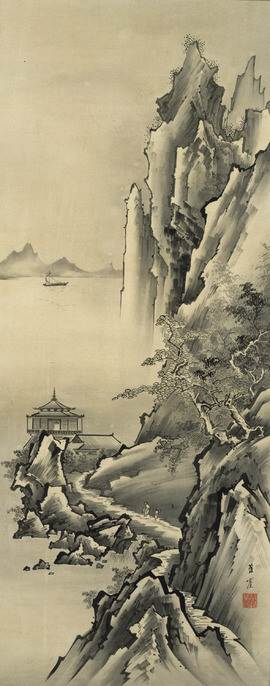
Literally translating as ‘Japanese painting’, ‘nihonga’ is a general term used to distinguish it from Western-style oil painting. As much as the motifs depicted, nihonga is defined by the materials used including paper, silk, wood or plaster as the base on which ‘sumi’ ink, mineral and other pigments are applied, often with gold leaf and other metals used in abundance.
NINGYO / 人形
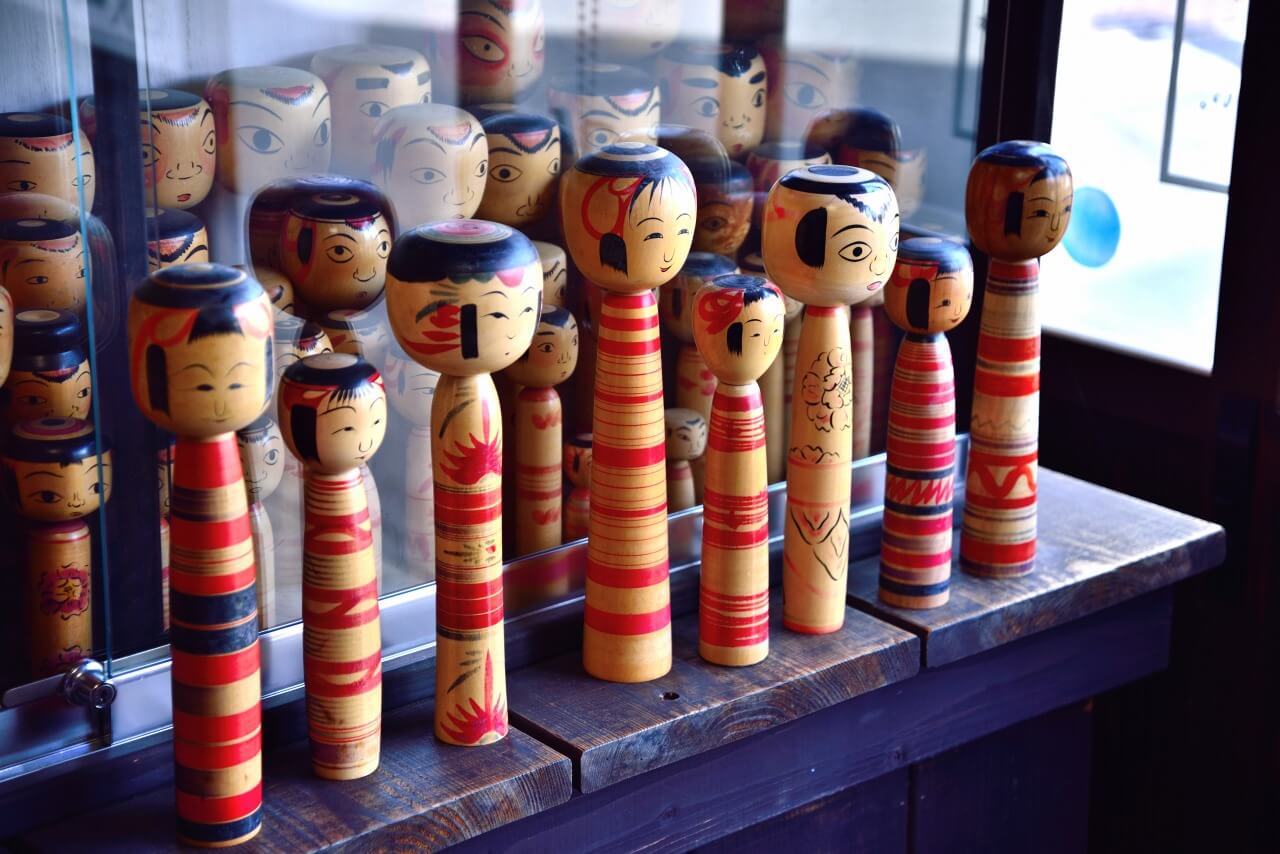
Dolls or ‘ningyo’ play an important role in Japanese culture. From ornaments used for ceremonies to toys and gifts, ningyo range in style and use with many past through the generations as cherished family heirlooms. Wooden ‘kokeshi’ dolls are particularly popular. Seemingly simple, these wooden dolls depict young girls, often simply but beautifully painted – popular with many international visitors as gifts and mementos of their time in Japan.
O-KAORI & KODO / お香 & 香道
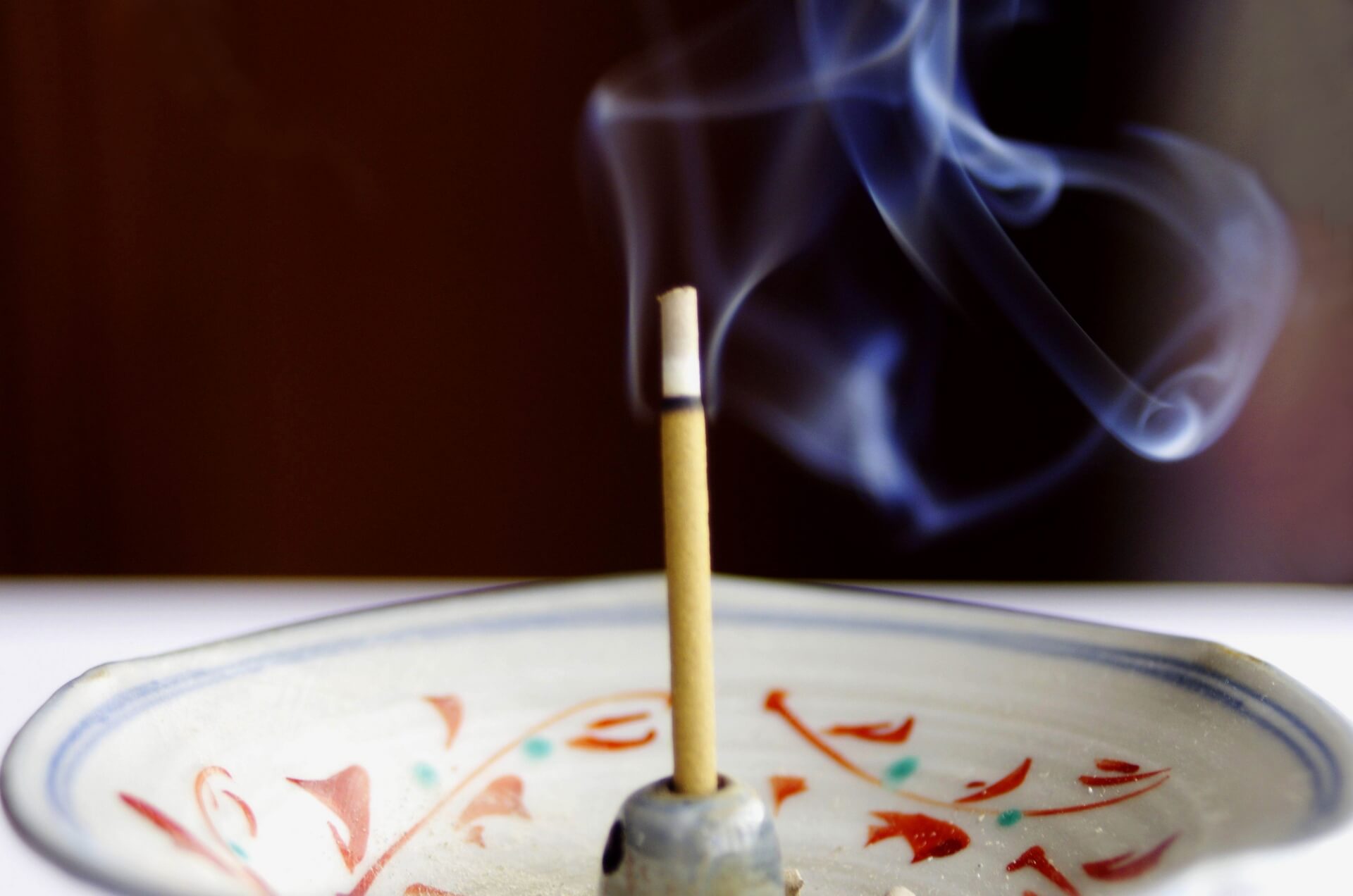
Known as ‘kaori’ or more politely, ‘o-kaori’ in Japanese, incense is a ubiquitous and seductive part of local culture. In use at temples, shrines, businesses, homes and other venues throughout Japan, incense imbues life here with serenity and calm. One of the more abstract artforms, ‘kodo’ or ‘way of fragrance’ is the art of appreciating Japanese incense. Considered one of the three classical arts of refinement – along with ‘ikebana’ and ‘chado’ – you don’t have to be a master to engage in kodo. Indeed for international visitors, purchasing incense while in Japan is a fantastic memento of your time here as upon lighting it at home, the beautiful and subtle fragrance will transport you back to your time here and suddenly, you are practicing kodo.
O-MAMORI / お守り or 御守
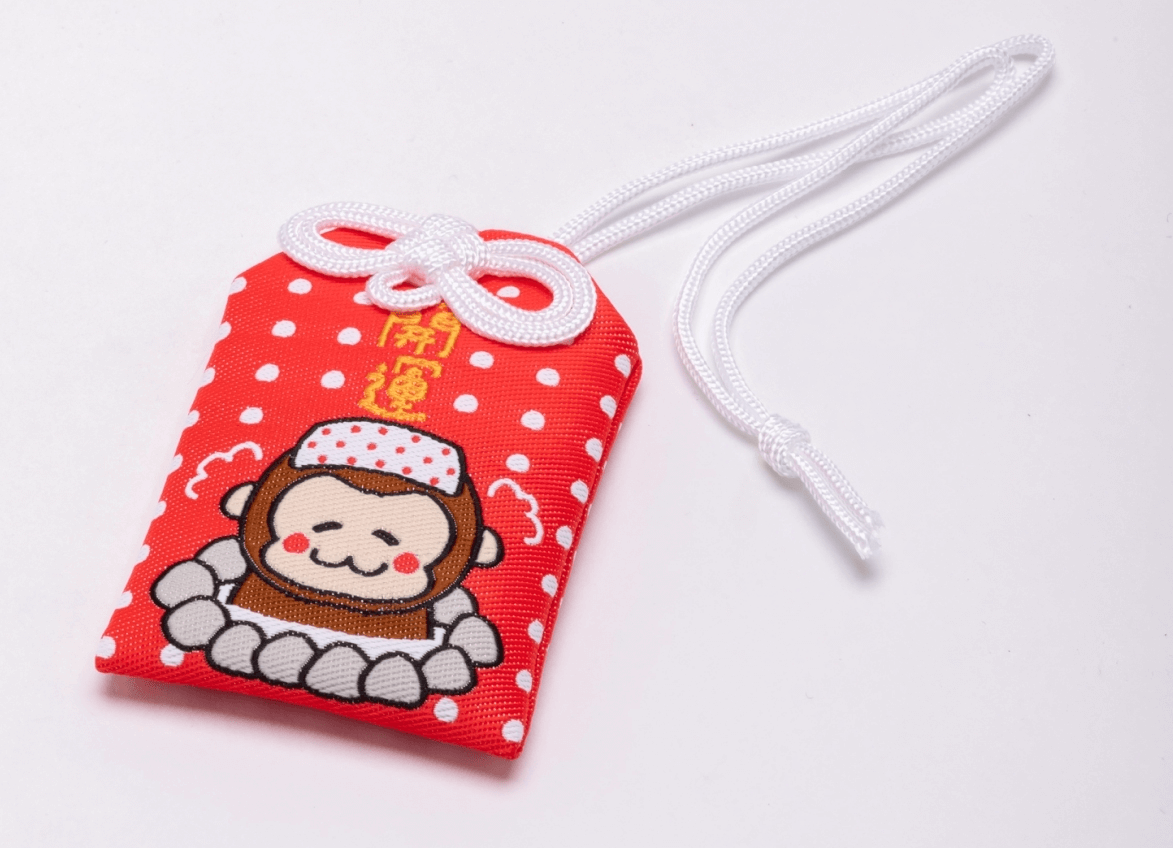
Visitors to temples and shrines will certainly come across ‘omamori’ during their travels. As amulets sold at temples and shrines throughout the country, omamori are said to provide luck and protection for those who carry them. They provide specific protection and luck for all-manner if events – from travel to study, child-birth, protection from accidents, wealth… the list is endless – with many sought-out from famous locations and auspicious temples and shrines. A small and meaningful gift or souvenir for travelers in Japan.
1 Day Tour
| 1-Day Tour from Nagoya: Ise’s Sacred Shrines and Captivating Coastlines | |
|
| |
| Period | All Year Round |
| Time | 9:00~18:00 |
| Meeting Place | JR Nagoya Station |
| Adult Rate | ¥24,900 |
| Child Rate | ¥19,900 |

O-MEN / 能面
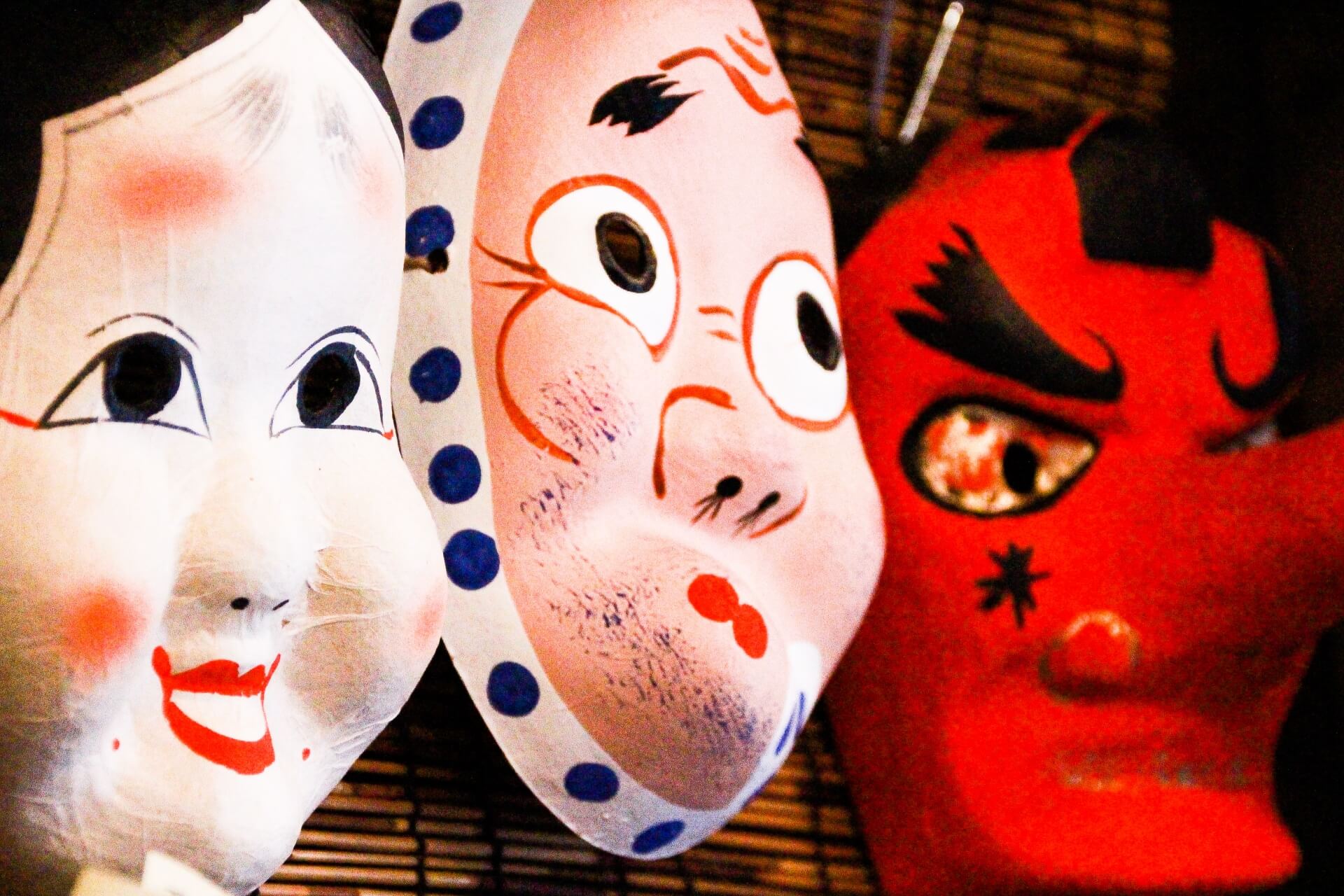
Referred to generally as ‘o-men’ in Japanese, masks play an important role in many aspects of society. With their origins in legend, folkore and classical arts of ‘kabuki’ threatre, ‘noh’ masks can convey all range of emotion and capture Japan’s pantheon of colourful, sometimes menacing characters including ‘oni’, ‘hannya’, ‘tengu’, ‘kitsune’, ‘hyottoko’ and more. Modern interpretations of these masks can be seen in the characters of manga and anime, which have their own plastic masks now often worn by children at festivals.
ORIGAMI / 折り紙
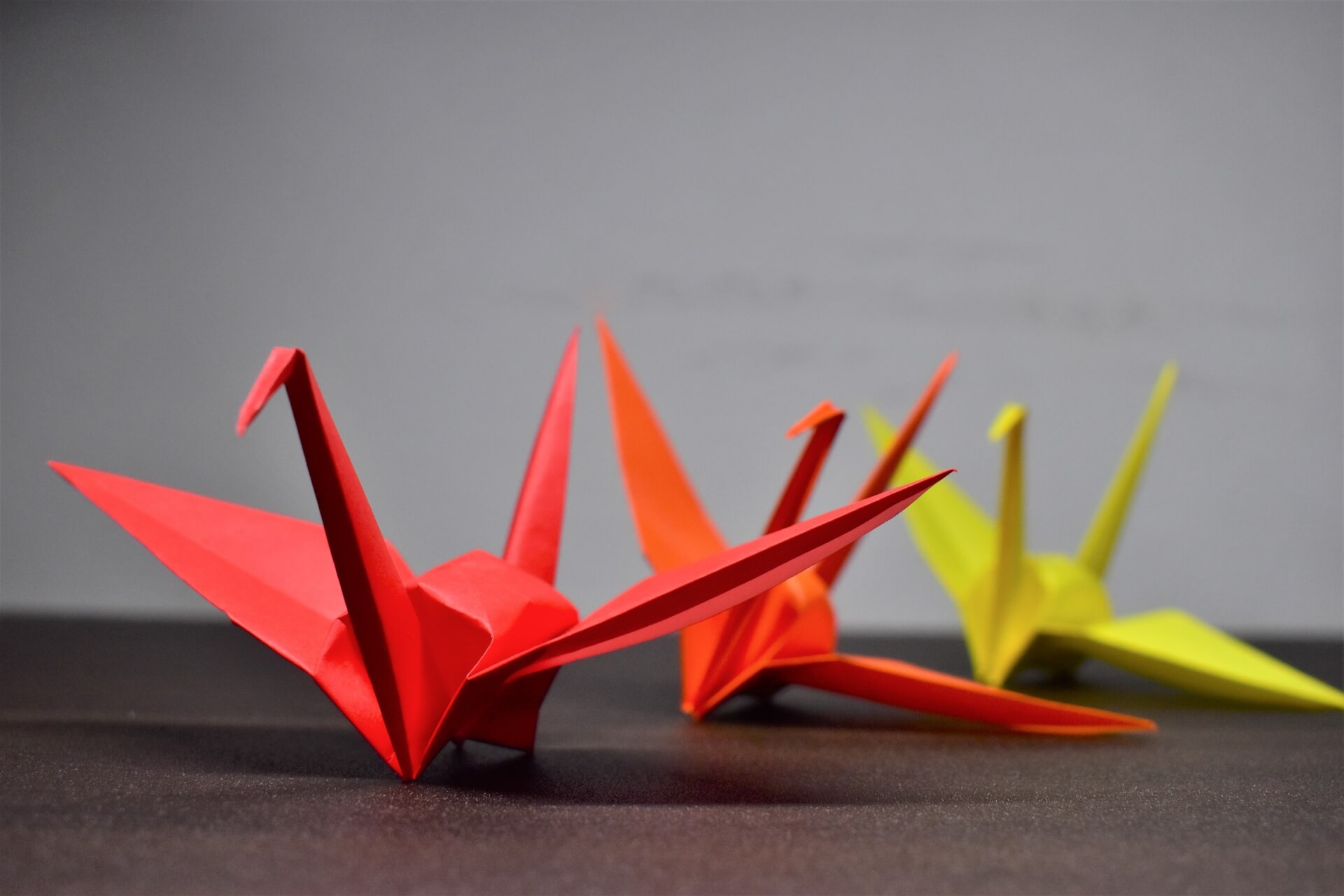
Of all the many forms of traditional Japanese arts and crafts, ‘origami’ or ‘paper-folding’ is likely the best-known to international visitors. From the first simple folds of paper, this ageless craft transcends to an art form and more, as the most intricate and astounding creations become possible. Enjoyed by Japanese from a young age, origami is often practiced throughout life with some practitioners mastering an artform that can produce astoundingly beautiful and complex creations.
SHICHIFUKUJIN / 七福神
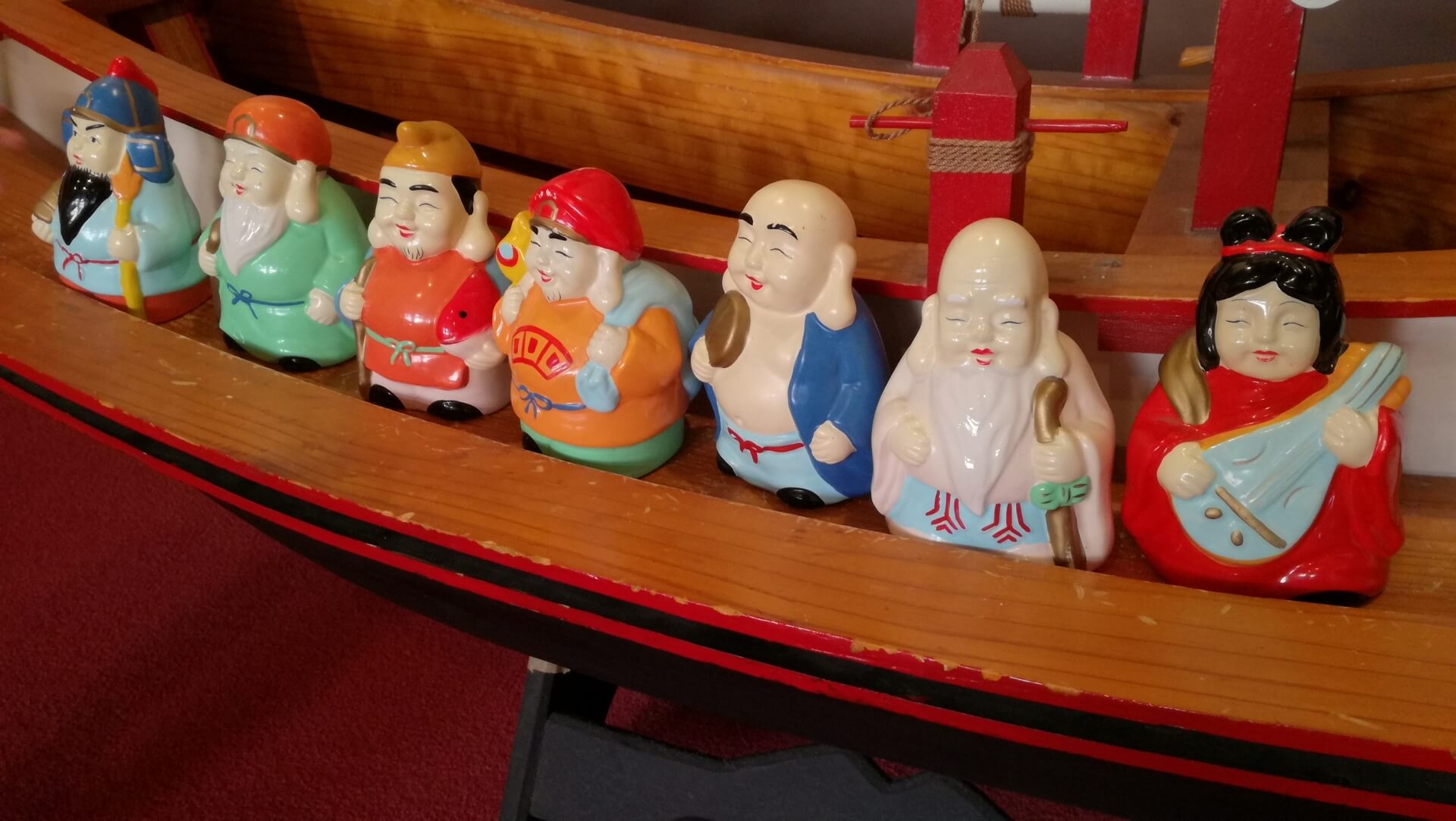
Referred to as ‘shichifukujin’ in Japanese, the ‘Seven Lucky Gods’ are popular throughout the country, often seen together, in pairs of by themselves. Interestingly only one of the seven – Ebisu – is of Japanese origin, with the other including Daikokuten, Bishamonten, and Benzaiten originating in India and Jurojin, Fukurokuju and Hotei coming from China. Each god has specific associations including wealth, health, arts, and good harvest among others, with many temples and shrines across Japan depicted to one or another. With their origins lying deep in history, figures and statues of the Seven Lucky Gods vary greatly in appearance and size – from the cute to traditional – and make a fun gift or souvenir for travelers in Japan.
SHIKKI / 漆器
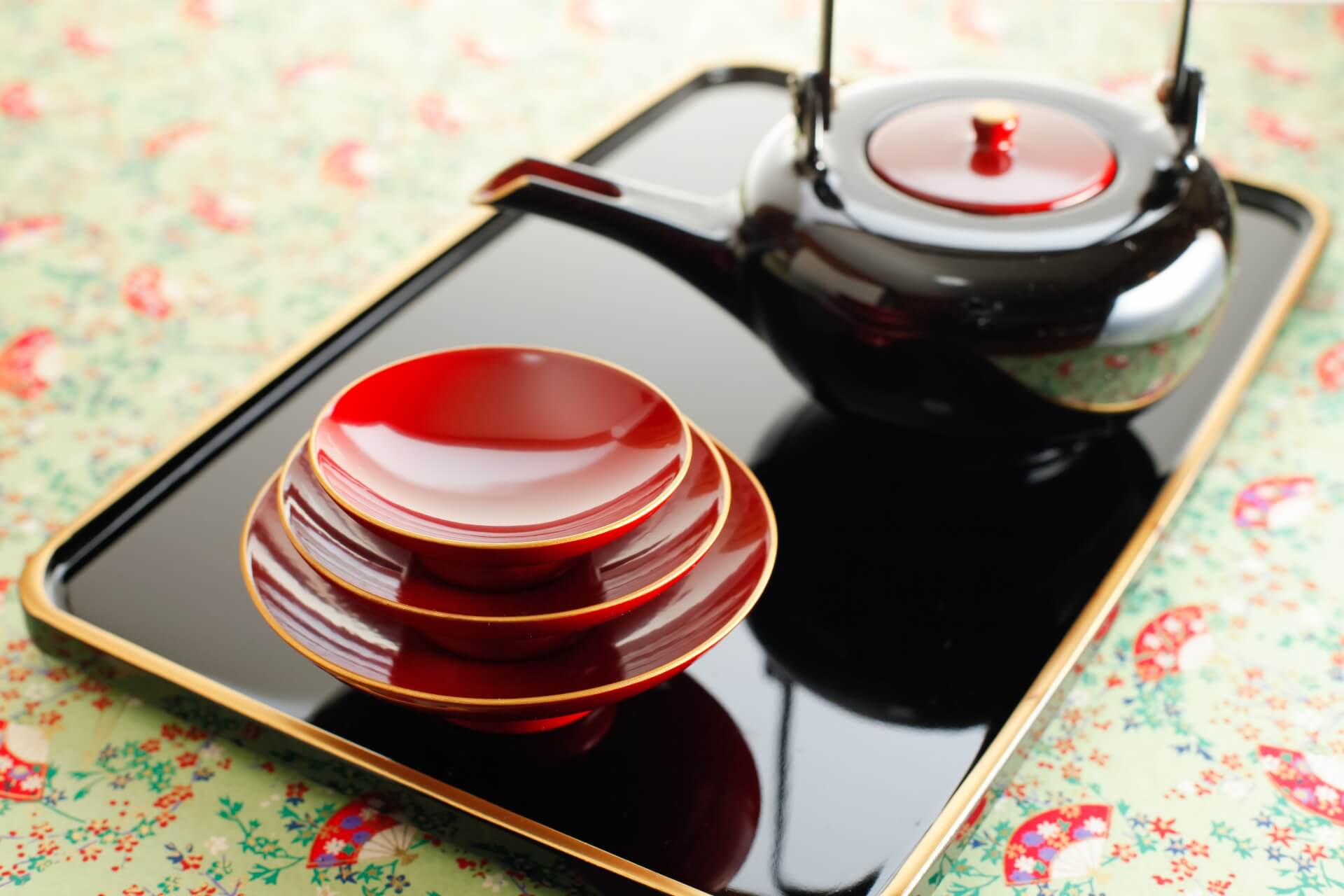
Known as ‘shikki’ in Japan, lacquerware as another broad-ranging artistic practice, the manifestations of which play a hugely important role in daily life and ceremonial events. Also referred to as ‘nurimono’ (coated thing) and ‘urushi-nuri’ (lacquer coating), lacquerware encompasses numerous styles and applications. Almost every Japanese home would have lacquered bowls in the kitchen, with many also cherishing ornamental pieces or heirlooms used on special occasions.
SHODO / 書道
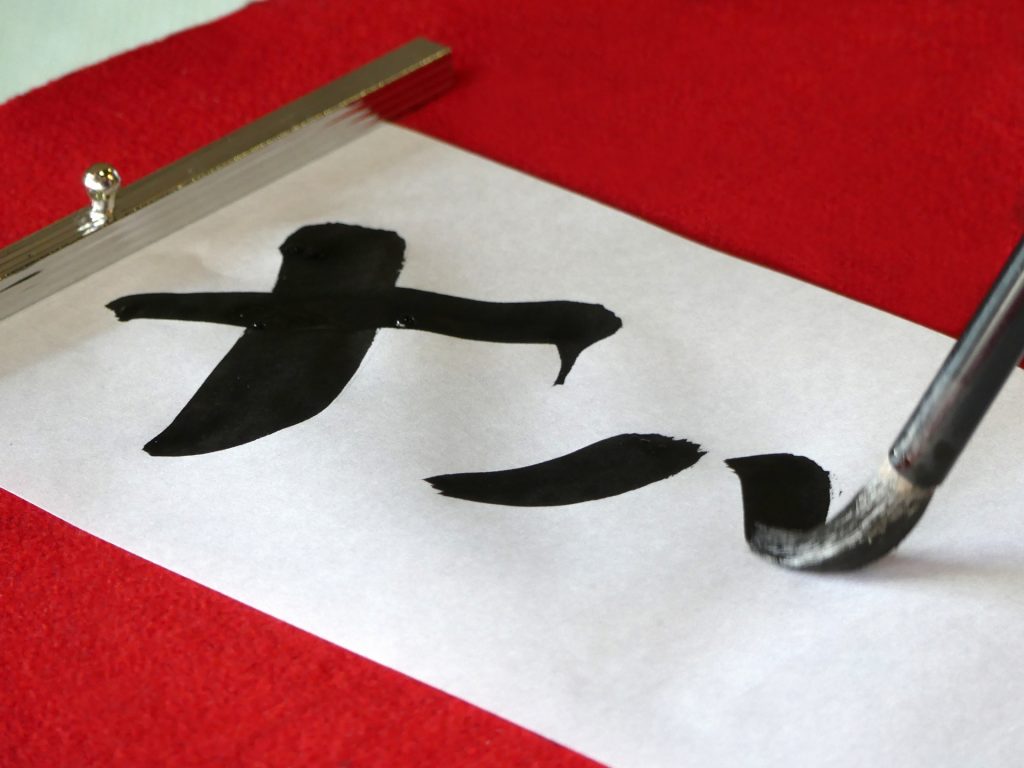
Using brushes to create highly stylised ‘kanji’ (written characters) that flow effortlessly across the paper, the ancient art of ‘shodo’ (calligraphy) is one of the most widely practiced in Japan. The form of the characters can be so stylised that even for Japanese, they may be difficult to recognise and highlighting that the form and flow of the brush is just as important as the meaning, making it an art form accessible to audiences that may have no understanding of the characters.
SUIBOKUGA / 水墨画
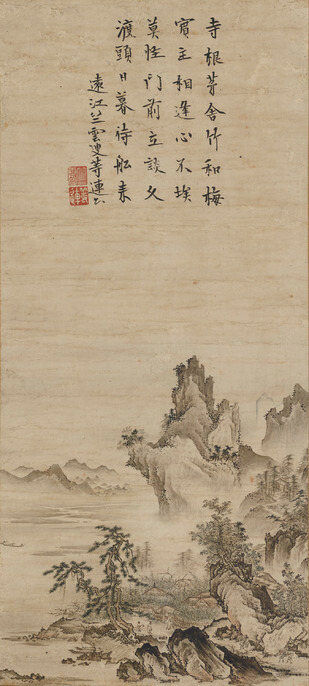
A similar practiced to ‘suisaiga’ – as described below – ‘suibokuga’ uses only black ‘sumi’ ink applied by brush onto paper, to produce images that are apparently simple in their execution but highly detailed and evocative. Also referred to as ‘sumi-e’, the technique is highly revered and often used to decorate ‘fusuma’, sliding doors that separate rooms with traditional landscapes and
SUISAIGA / 水彩画
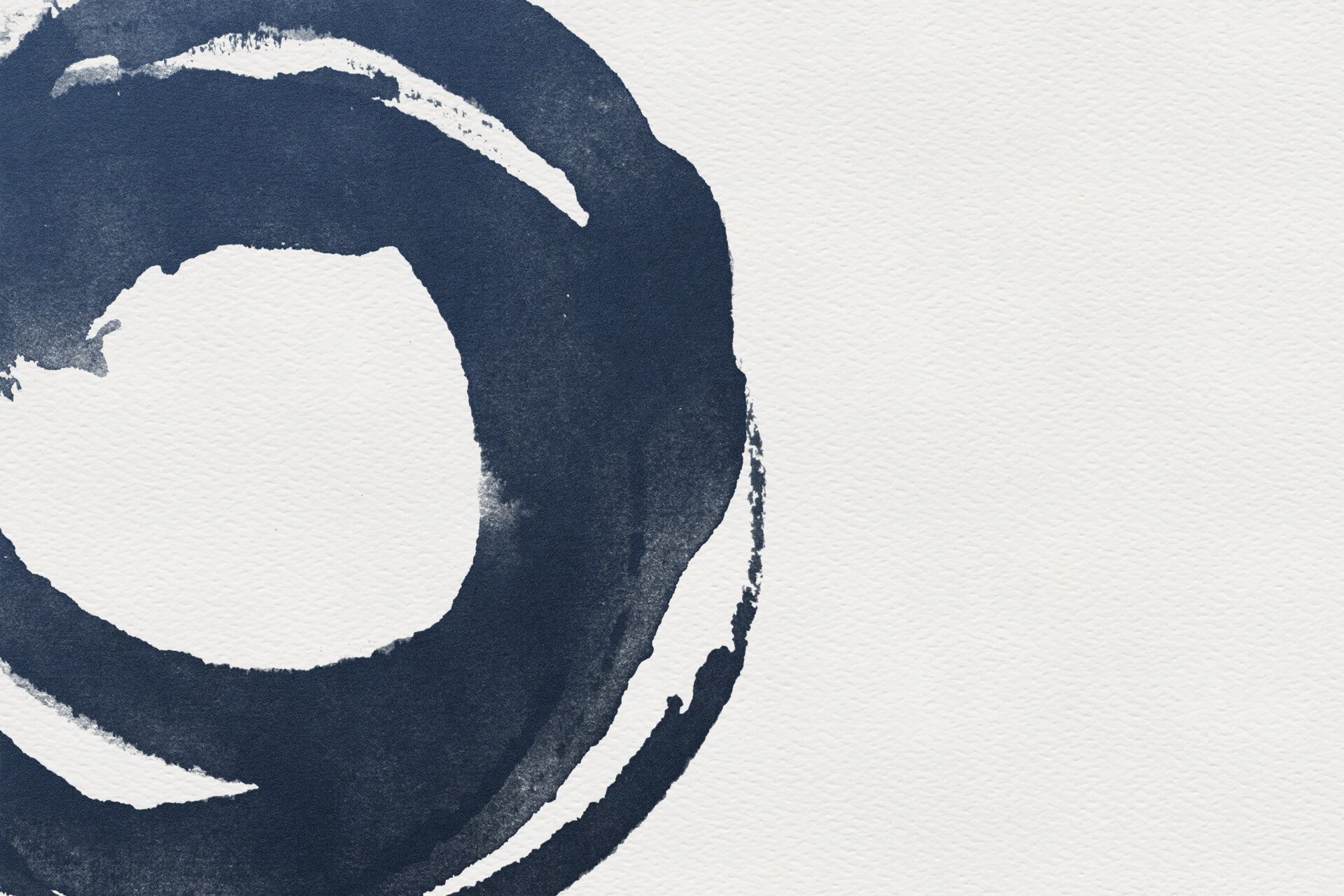
Referred to as ‘suisaiga’ in Japanese, watercolour painting is a popular artform adopted from the West. Practiced by both amateur and professional artists, this highly adaptable form of painting is used to depict all manner of subjects from traditional Japanese landscapes, contemporary portraits and abstract paintings.
TAKEZAIKU / 竹細工
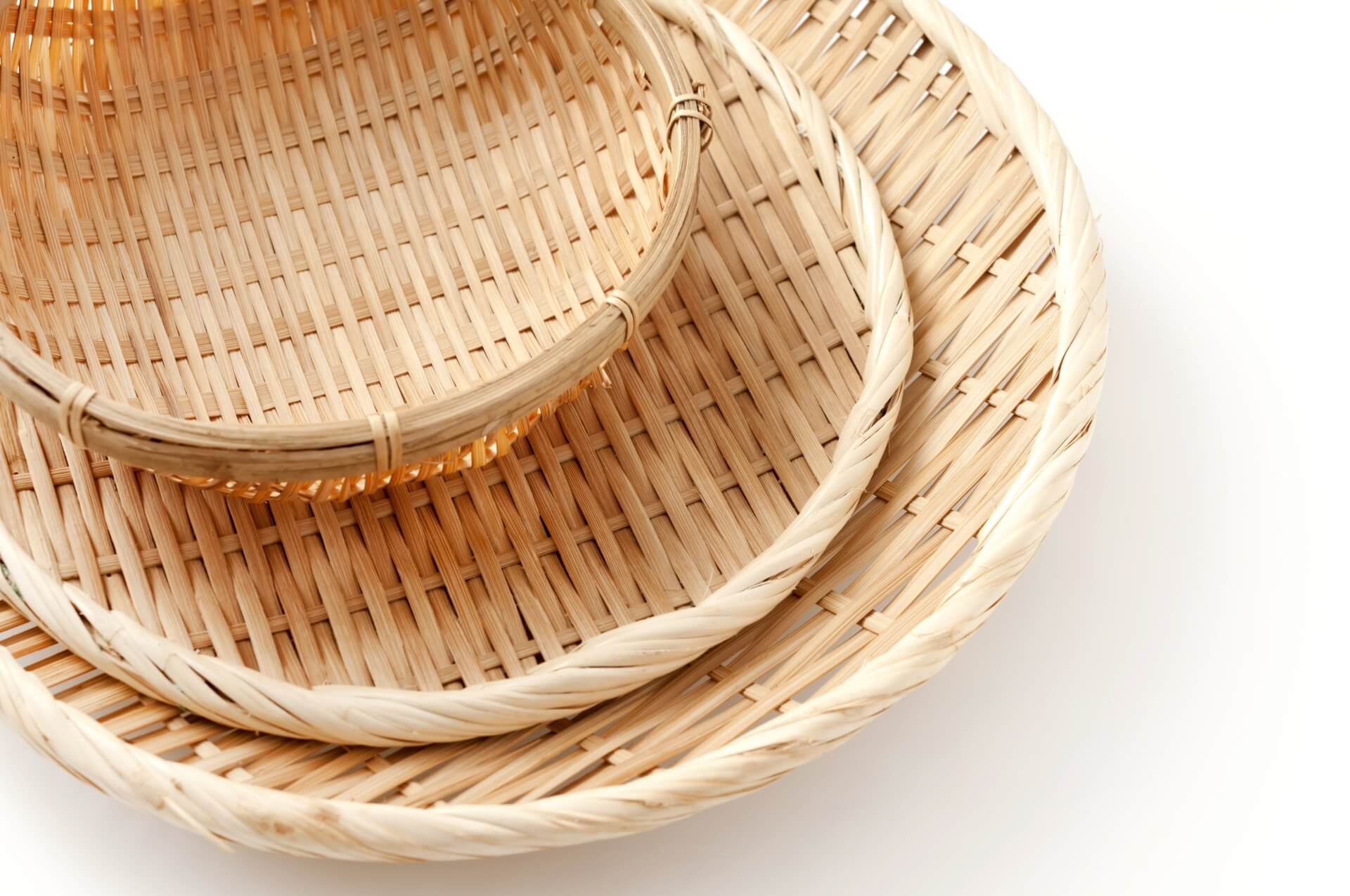
Bamboo weaving is a traditional craft still practiced today to produce both functional and highly elaborate forms. Many are intended for daily use while others are woven for their aesthetic beauty and between those two purposes, many occupy both spaces – both functional and intentionally beautiful. One of the world’s most durable and versatile natural products, bamboo is shaped into an amazing array of products and countless purposes, with the work of many takezaiku artists fetching extremely high prices.
TEMARI / 手まり
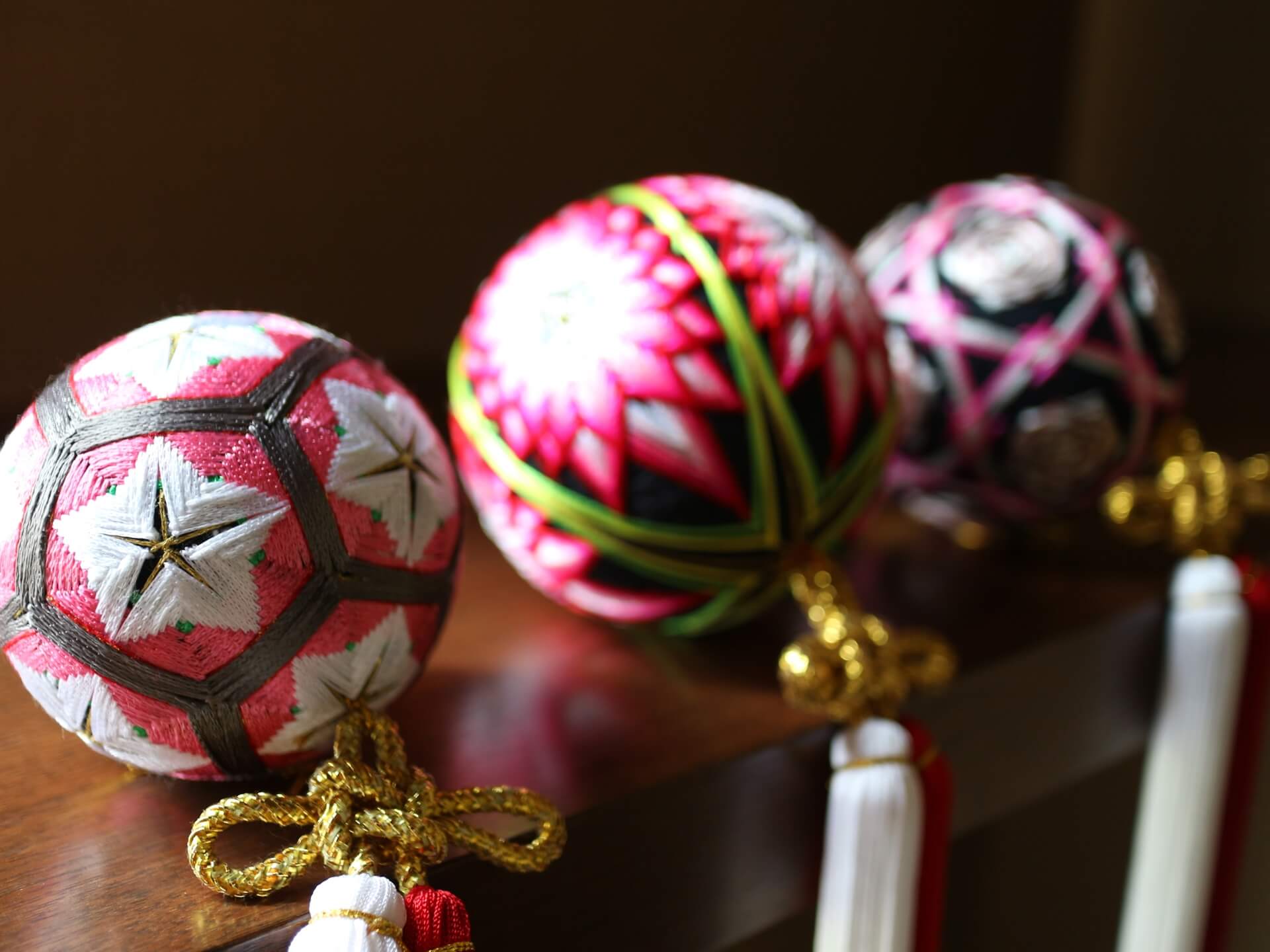
Introduced to Japan from China, ‘temari’ are colourful fabric and embroidered balls originally given to children as toys at New Year. Often crafted by their grandmother, temari are cherished by children and past down through generations as family heirlooms. In-keeping with any craft in Japan, some temari are exceptionally skillful and elaborate, produced purely for their artistic value rather than a toy.
TENGUI / 手拭い
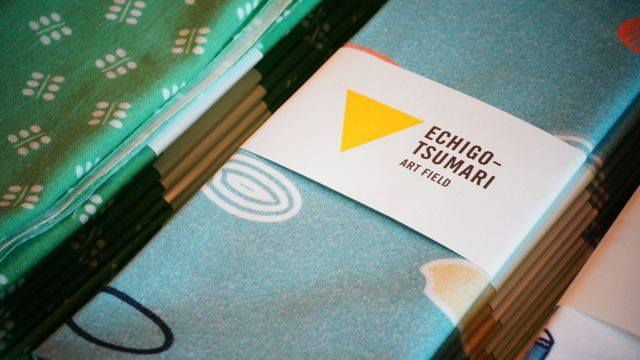
Typically made from cotton, ‘tengui’ are thin fabrics used as multi-purpose towels. Usually measuring 35 by 90 centimetres, tengui are intended as a decorative covering for everyday items or as decorations in their own right. Hugely popular as souvenirs, tengui come in all-manner of styles and decorative patterns.
TOGEI / 陶芸
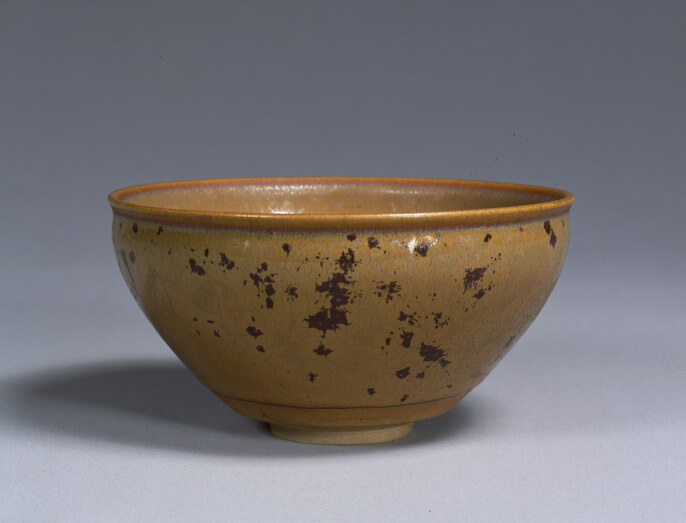
One of the oldest crafts in Japan, ‘togei’ refers to Japanese pottery and porcelain – a practice that dates back to the Neolithic including Japan’s celebrated ‘Jomon’ pottery. Also referred to as ‘tojiki’ (陶磁器) and ‘yakimono’ (焼きもの), this is another hugely broad and complex artform that is impossible to describe succinctly. From the earliest earthernware to highly technical porcelain and glazing, Japanese ceramics are highly sought after and are ever present in daily life.
1 Day Tour
| 1-Day Tour: Nagoya’s Industrial Legacy and Toyota’s Innovation | |
|
| |
| Period | All Year Round |
| Time | 10:00-17:00 |
| Meeting Place | JR Nagoya Station |
| Adult Rate | ¥17,800 |
| Child Rate | ¥11,000 |

UKIYO-E / 浮世絵
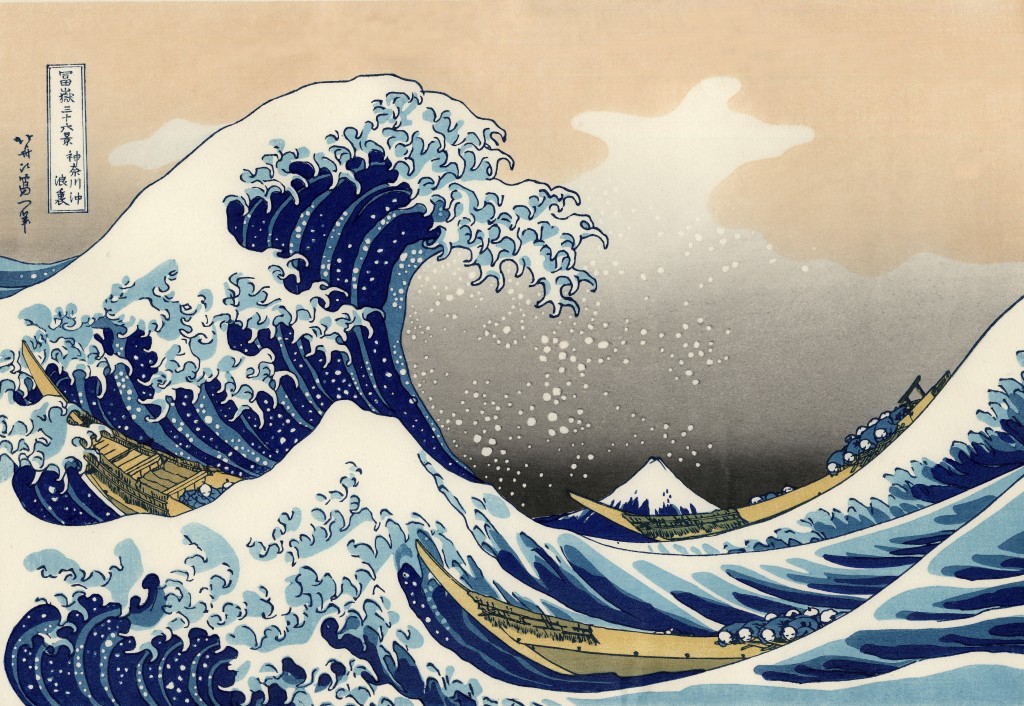
International visitors are likely to have encountered ‘ukiyo-e’ long before they reach Japan. A style of art the flourished during the Edo Period (1603-1868), ukiyo-e translates as pictures of ‘the floating world’. Produced as woodblock prints – or ‘hanga’ – and paintings, ukiyo-e depicted the world of ‘kabuki’ actors, ‘geisha’ ‘sumo’ and natural landscapes – considered a fleeting, ephemeral world. Japan’s most celebrated artist, Katsushika Hokusai, is considered the master of ukiyo-e, of which his woodblock print ‘The Great Wave Off Kanagawa’ is instantly recongisable and one of the most reprinted images in human history.
1 Day Tour
| 1-Day walking tour in Osaka:Castle, temples and Ukiyoe | |
|
| |
| Period | All Year Round |
| Time | 09:00 – 17:00 |
| Meeting Place | Shin-Osaka Station / Osaka Station |
| Adult Rate | ¥18,000 |
| Child Rate | ¥11,500 |

WASHI / 和紙
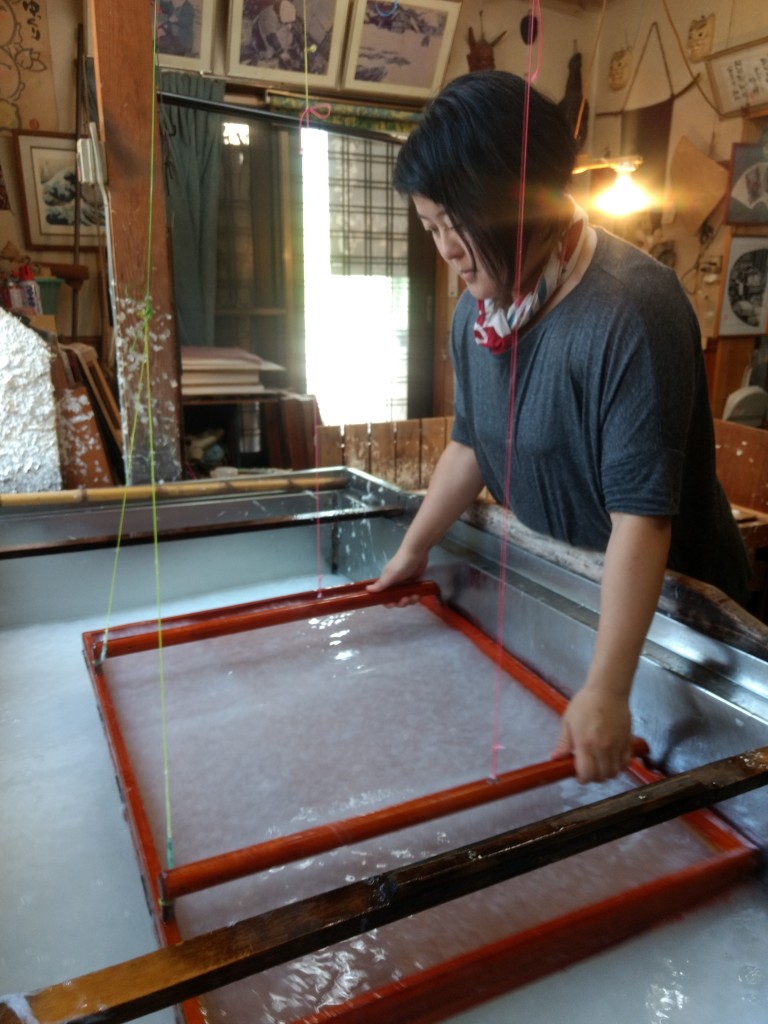
‘Washi’ refers to traditional Japanese paper and applies to paper produced using local fibres and traditional methods. The medium onto which or through which many of the artforms on this list are expressed, washi is appreciated in its own right and considered an artform that plays a fundamental role in many aspects of Japanese culture.
1 Day Tour
| 1 Day Tour from Kanazawa: Shirakawa-go, Gokayama and Wood Carving Village | |
|
| |
| Period | All Year Round |
| Time | 09:00 – 18:00 |
| Meeting Place | Kanazawa Station |
| Adult Rate | ¥23,800 / 25,800 |
| Child Rate | ¥15,000 / 17,000 |

EXPLORE JAPAN’S BEST MUSEUMS & GALLERIES
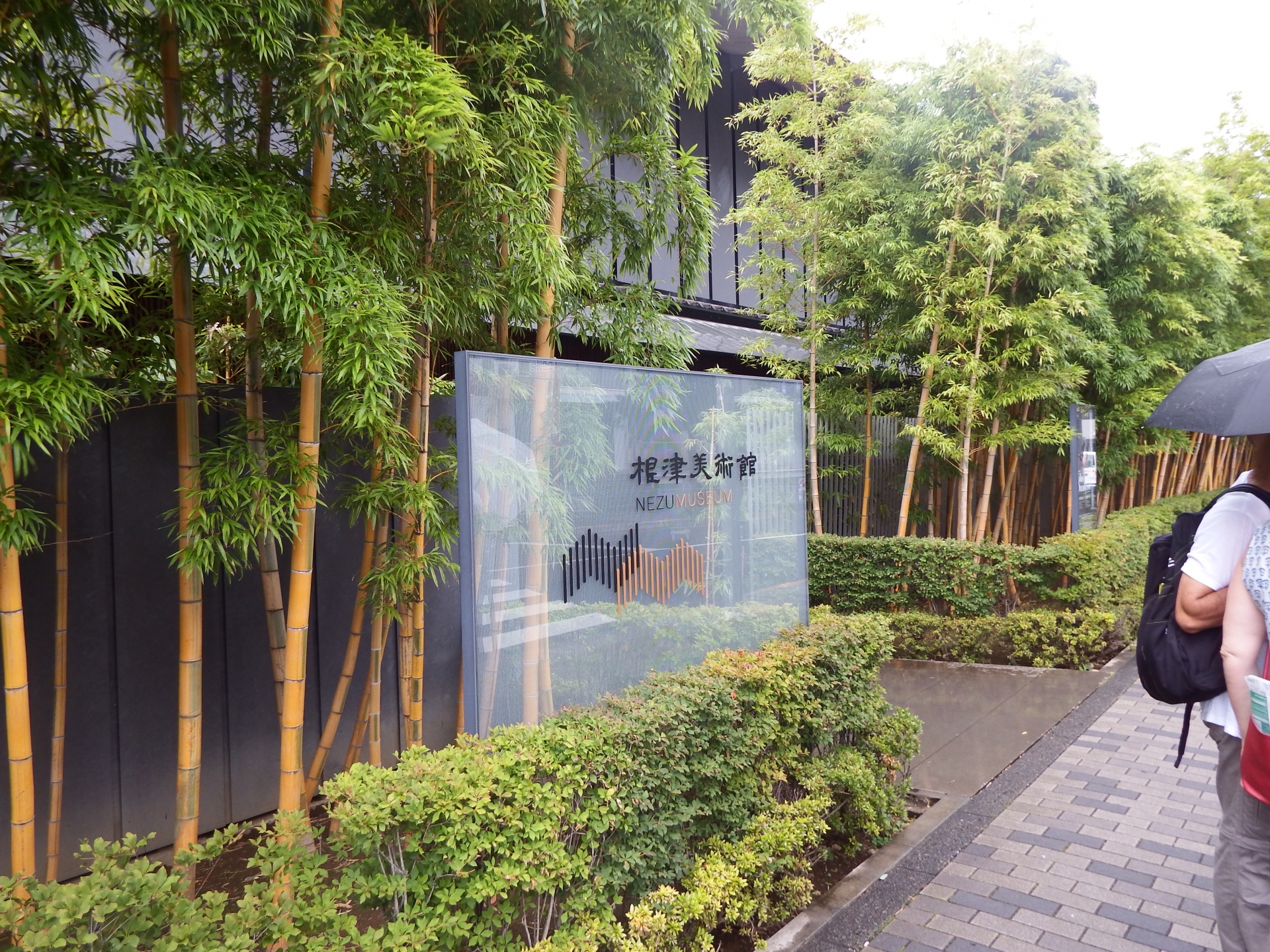
Japan boasts some outstanding museums and galleries, showcasing the breadth and beauty of creative pursuits throughout the country. Naturally, the greatest concentration of art spaces is in Tokyo with some truly excellent public institutions, private collections, and pop-up galleries exhibiting everything from Neolithic ceramics, to treasures of the Edo Period or the most modern, abstract expressions in creativity.

Our ’40 Recommended Museums & Galleries In & Around Tokyo’ page introduces some of our favourites in the capital before leading you outside, first to Hakone and Mount Fuji, and then onto Nagano and deep into Central Japan. We do so in recognition that Japan’s creative energy isn’t limited to the capital, with some of the best museums and galleries lying outside of Tokyo, enticing you to travel and explore the entire country – something we like to call, Art Space Japan.




